DashClicks Blog
The industry's top experts offer their best advice, research, how-tos, and insights—all in the name of helping you level-up your business and online marketing skills.
Join Us!

The Role of White Label PPC in Meeting Client Demands for Multi-Platform Ads
In today’s digital world, clients expect more than just a presence on one advertising platform—they expect complete visibility across every channel their customers use. The multi-platform advertising landscape is no longer a nice-to-have; it’s a core expectation for brands that want to reach audiences with precision, consistency, and measurable ROI.
But for most marketing agencies, meeting these expectations isn’t easy. Managing campaigns across Google, Facebook, Instagram, LinkedIn, TikTok, and emerging platforms requires deep technical expertise, dedicated creative resources, and advanced tracking systems. Balancing all that while maintaining profit margins and delivering consistent results can quickly overwhelm even experienced teams.
That’s where white label PPC services come in. By partnering with specialists who handle the complex, platform-specific aspects of campaign management, agencies can expand their service offerings, improve performance, and keep costs under control—without needing to build entire departments from scratch.
What Is Multi-Platform Advertising?
Multi-platform advertising goes far beyond running campaigns on Google and Facebook. It encompasses a comprehensive approach that includes search, social, video, display, programmatic, and even connected TV advertising. Each platform serves different purposes in the customer journey and requires specialized knowledge to maximize results.
Search and Shopping Platforms like Google and Bing capture high-intent users actively looking for solutions. These platforms excel at converting ready-to-buy customers but require expertise in PPC keyword research, bid management, and shopping feed optimization.
Social Media Platforms, including Facebook, Instagram, LinkedIn, and TikTok, focus on discovery and engagement. Users on these platforms aren't necessarily looking to buy immediately, so campaigns must be crafted to build awareness and nurture interest over time.
Emerging Platforms such as Pinterest, Snapchat, and Reddit offer unique opportunities to reach niche audiences. Reddit's community-based targeting allows brands to connect with highly engaged users, while Pinterest excels at capturing users in the inspiration phase of their buying journey.
Cross-Device Integration ensures campaigns follow users across smartphones, tablets, desktops, and connected TVs. This omnichannel marketing approach requires sophisticated tracking and attribution models to understand the full customer journey.
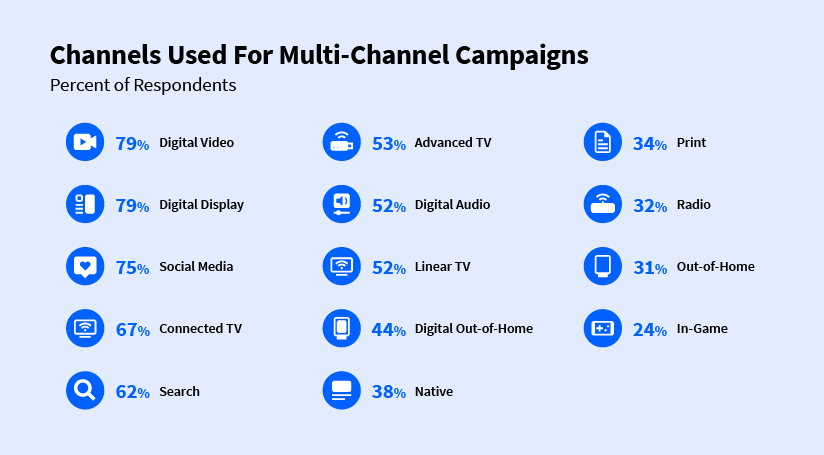
Image Source: StackAdapt
The key challenge is that each platform operates differently. LinkedIn users respond to professional, B2B-focused content, while TikTok users engage with entertaining, authentic video content. Successful multi-platform campaigns require a deep understanding of platform-specific user behavior and preferences.
Why Clients Now Demand Multi-Platform Ads?
As client expectations evolve, a single‑channel campaign is increasingly seen as a liability rather than a strength. Here are the main reasons clients now insist on multi‑platform strategies:
- Fragmented Audience Attention: Consumers today hop across devices and apps. In 2025, data shows the typical user actively visits about 6.84 different platforms in a month. This means by the time someone converts, they’ve likely seen the brand multiple times across different channels. Limiting your presence to one or two platforms risks missing critical touchpoints.
- Platform‑Specific KPIs: Many clients want to see performance broken down by channel—not just aggregate numbers. They expect ROAS, cost per acquisition, or conversion rates for Search, Social, Display, TikTok, etc. It’s no longer enough to say “overall ROAS was 4×”; they want to know which platforms drove that number and why.
- Risk Aversion & Visibility: Clients often worry they’re leaving money on the table by skipping platforms. They expect agencies to “be everywhere”—covering all meaningful audience touchpoints without bloating internal resources. If a competitor appears on a new or trending platform and drives success, clients demand that their campaigns also be nimble enough to pivot.
- Audience Journey Complexity: Modern buyer journeys are non-linear. A consumer may first discover a brand via reels, then research via Google Search, revisit via display or email, and finally convert via a shopping ad. A campaign that treats platforms in isolation can’t capture the full path—and will underinvest or misattribute effort along the way.
- Performance Accountability: Clients now track not only final conversions but micro‑conversions: email signups, content downloads, product views, and add-to-carts. They want to see cross-channel ROI—how earlier steps in the funnel influence final sales. Agencies must provide a full picture of performance, not just a narrow lens.
- Data‑Driven Expectations: Clients want detailed insights, not just high-level summaries. They expect to see which audiences, creatives, or messaging worked on each platform. They demand transparency and the ability to drill into numbers themselves. Incomplete or opaque reporting no longer cut it.
- Behavioral Trends & Stats: Recent research supports the value of multi-platform exposure. Companies with diversified social media strategies, keeping a presence across multiple channels rather than focusing narrowly, achieved 2% to 5% higher total web sales. Another analysis showed cross-platform campaigns led to a 25% increase in purchase intent when properly sequenced across screens.
These findings show that overlapping messages across platforms reinforce brand awareness, improve trust, and increase the likelihood of purchase.

Case Insight (Retail Client Example)
A retail client insisted on synchronized campaigns across search, shopping, and social channels. They required consistent creative themes, messaging alignment, and coordinated targeting across all touchpoints.
The agency had to navigate the challenges of differing ad formats (shopping feeds vs. dynamic social vs. text search), align budgets, and maintain brand coherence while optimizing for each platform’s strengths. This case illustrates how complex and resource-intensive multi-platform execution can be—but is now treated as a baseline expectation.
Why Agencies Struggle with Multi-Platform Demands?
Running effective multi-platform advertising campaigns sounds good in theory—but in practice, most agencies face deep operational and structural challenges that limit their ability to deliver consistent results. Here’s why:
- Specialization Overload: Agencies often structure their teams by platform—one person manages Google Ads, another handles Meta, and another focuses on LinkedIn or TikTok. While this setup ensures platform expertise, it also creates silos. Each specialist operates independently, leading to bottlenecks in strategy alignment, campaign execution, and reporting. When campaigns need to be coordinated across six or more channels, communication slows down and performance suffers.
- Inconsistent Attribution and Measurement: Cross-platform attribution remains one of the biggest hurdles. Many agencies still rely on basic last-click attribution, which credits the final ad interaction before conversion. This outdated model hides the real influence of upper-funnel campaigns like social and video. As a result, agencies lose visibility into how each platform contributes to ROI, leading to misinformed budget decisions and inconsistent reporting to clients.
- Creative Production Fatigue: Every platform demands its own creative format, tone, and optimization strategy. Scaling ad creatives for multiple networks—Google, Facebook, Instagram, LinkedIn, TikTok, YouTube, and more—quickly overwhelms internal teams. Designers and copywriters can only produce so much at once, leading to slower campaign launches and creative fatigue. Over time, this can cause performance dips simply because the creative refresh cycle can’t keep up with platform demands.
- Emerging Platform Blind Spots: The digital ad landscape evolves fast. Platforms like TikTok, Reddit Ads, and emerging retail media networks require specialized knowledge and constant learning. Many agencies struggle to stay ahead, often choosing to ignore these platforms altogether or experimenting without the proper expertise. This results in missed opportunities and subpar performance on channels that could otherwise drive growth.
- Metric Insight: Performance Decline Across Platforms: According to an industry survey in 2024, agencies relying solely on in-house PPC teams often struggle to maintain consistent CTRs and ROAS when managing campaigns across more than three platforms. The lack of unified expertise and integrated tools contributes to declining efficiency and uneven performance metrics.
- Cross-Platform Expertise Gaps: It’s rare for an in-house team to include specialists for every platform—especially emerging ones. Instead, a few generalists are expected to handle multiple networks, each with different ad structures, bidding strategies, and creative nuances. This gap often shows up in weaker results on newer or less familiar platforms, reducing the overall campaign impact.
- Time-Intensive Campaign Setup: Running ads across multiple platforms means managing separate campaigns, ad sets, creatives, budgets, and reporting dashboards. Each one has its own interface and rules, which multiply setup and optimization time. What should take hours can stretch into days, delaying go-lives and slowing down performance testing.
- Inefficient Tools and Fragmented Reporting: Many agencies rely on a patchwork of tools for campaign management and reporting. One dashboard for Google, another for Meta, a third for analytics, and maybe a spreadsheet to tie it all together. This fragmented system creates data discrepancies, slows reporting, and makes it difficult to get a unified view of campaign performance.
- Client Expectation Management: Finally, agencies often struggle to explain performance differences across platforms. A TikTok campaign behaves very differently from a Google Search campaign—but clients don’t always understand why. Without clear education and communication, this leads to frustration, misaligned expectations, and a perception that the agency is underperforming.
How White Label PPC Solves Multi-Platform Challenges?
White label PPC services offer agencies immediate access to platform specialists without the time and cost investment required to build internal expertise. This partnership model allows agencies to offer comprehensive multi-platform services while maintaining focus on their core competencies.
- Dedicated Platform Specialists ensure each campaign receives expert attention. Instead of one generalist managing Google, Facebook, and TikTok campaigns, white label providers assign platform-specific experts who stay current with the latest features, best practices, and optimization techniques. This specialization typically results in 15-30% better performance compared to generalist management.
- Advanced Attribution and Analytics come standard with quality white label PPC services. These providers invest in sophisticated tracking and reporting tools that most agencies can't justify purchasing independently. Clients receive detailed cross-platform attribution reports showing exactly how each channel contributes to their success.
- Scalable Creative Production eliminates the bottleneck that prevents many agencies from expanding across platforms. White label providers typically maintain creative teams experienced in producing platform-optimized content at scale. This capability allows agencies to launch campaigns quickly without overwhelming internal resources.
- Unified Reporting Systems simplify client communication by presenting multi-platform performance in easily understood dashboards. Instead of juggling separate reports from each platform, agencies receive comprehensive summaries that highlight key insights and optimization opportunities.
- Early Access to New Features gives agencies competitive advantages. Established white label PPC providers often participate in platform beta programs, gaining early access to new advertising features and optimization tools. This early access translates into first-mover advantages for agency clients.
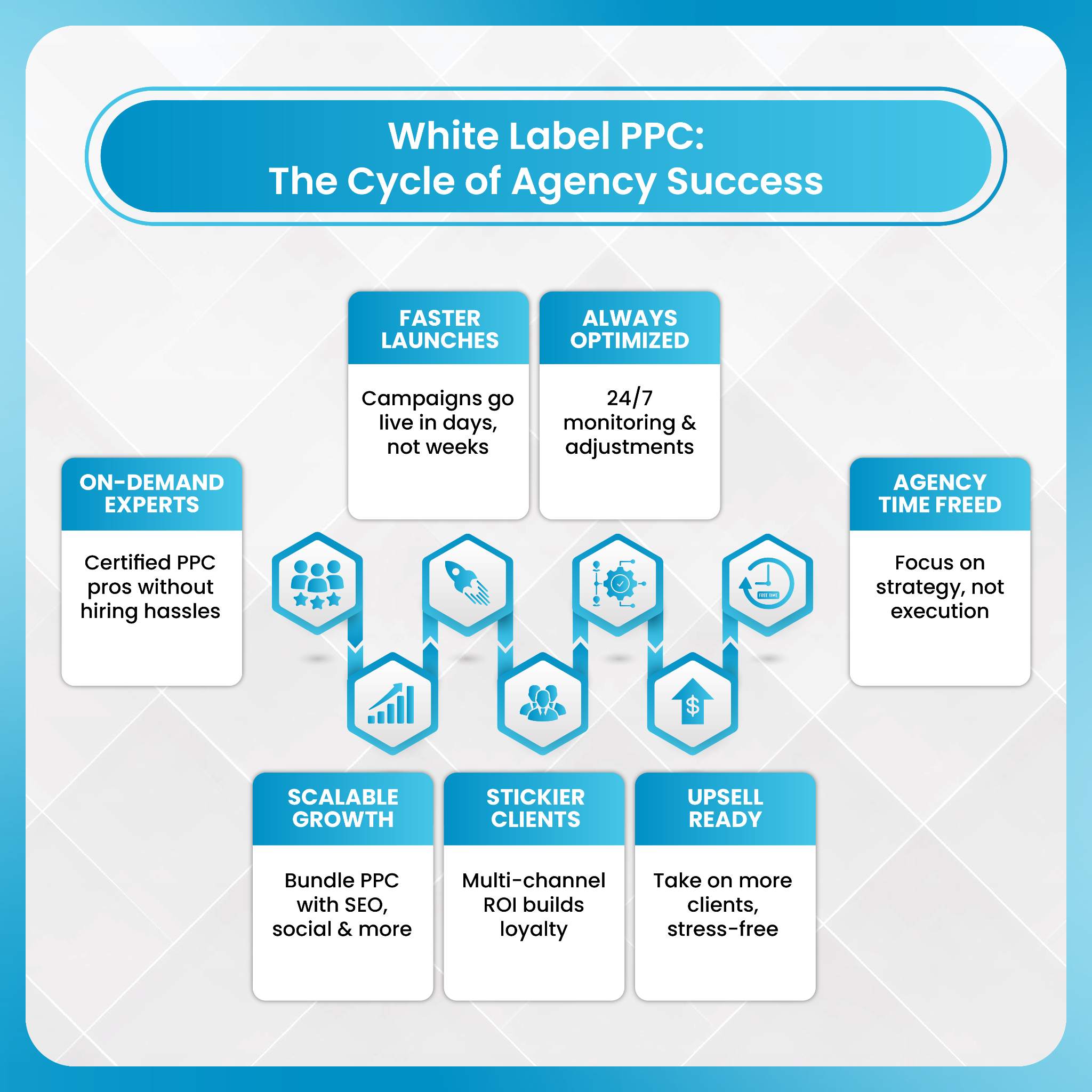
DashClicks exemplifies how white label PPC services can transform an agency's multi-platform capabilities. Their platform provides agencies with access to specialists across Google Ads, Facebook, Instagram, LinkedIn, TikTok, and other major platforms. The unified dashboard combines performance data from all channels, giving agencies clear visibility into cross-platform campaign effectiveness.
More importantly, DashClicks handles the technical complexity of multi-platform management while allowing agencies to maintain direct client relationships and brand their services appropriately.
Measuring Multi-Platform Success
Running campaigns across several platforms only works if you can measure what’s actually driving results. Without clear, unified reporting, agencies risk misallocating budgets, missing optimization opportunities, and losing client confidence. Measuring success in a multi-platform environment requires both a holistic approach and the right tools.
1. Holistic Metrics: Instead of looking at each platform in isolation, agencies need to focus on how all channels contribute to the customer journey. Multi-touch attribution models show the full picture by assigning credit to every meaningful interaction, not just the last click. Tracking return on ad spend (ROAS) by platform, applying frequency caps to prevent ad fatigue, and monitoring engagement rates for each channel together create a more accurate measure of campaign health and efficiency.
2. Client-Facing Dashboards: Clients expect transparency and simplicity. A unified dashboard that combines data from Google Ads, Meta, LinkedIn, TikTok, and other platforms helps agencies present results clearly and consistently. Instead of juggling multiple reports, clients can see how each channel contributes to overall goals in one place. This not only builds trust but also saves time during review meetings and performance updates.
The white label dashboard by DashClicks offers agencies a unified space to share reports, track progress, and manage client communication in real time. The dashboards allow clients to view key campaign metrics, files, and updates through a clean, organized interface.
3. Trend Analysis and Predictive Insights: Data isn’t just for reporting—it’s for forecasting. By analyzing historical performance data, agencies can identify seasonal patterns, platform-specific strengths, and creative trends. Predictive analytics takes this a step further by projecting future ROI and helping plan budget distribution across platforms. This kind of forward-looking insight makes campaign strategies smarter and improves both upsells and client retention.
4. KPI Standardization: Every platform measures success differently—clicks, conversions, views, or engagement—but without standardized KPIs, it’s nearly impossible to compare performance across channels. Establishing consistent metrics, such as cost per acquisition (CPA), conversion rate, and ROAS, allows agencies to benchmark campaigns fairly and optimize with confidence.
Expert Insight:
“Agencies that cannot visualize multi-platform performance cannot retain clients.”
— Digital Marketing Analyst, 2024
In a multi-platform world, success depends on the ability to connect data, identify insights, and communicate results clearly. Agencies that master unified measurement will outperform those that treat each platform as a separate silo.
Building Long-Term Client Relationships
Multi-platform advertising capabilities have become essential for client retention in competitive markets. Agencies that can't deliver comprehensive cross-platform strategies risk losing clients to more capable competitors.
- Competitive Differentiation emerges naturally when agencies can offer genuine multi-platform expertise. While many agencies claim multi-platform capabilities, few can deliver the specialized knowledge and optimization strategies that drive superior results across all channels.
- Client Confidence increases when agencies demonstrate deep platform knowledge and can explain the strategic rationale behind cross-platform campaign decisions. Clients trust agencies more when they see evidence of specialized expertise rather than generic approaches applied across all platforms.
- Revenue Growth opportunities multiply when agencies can expand client campaigns across additional platforms. Instead of losing budget to other agencies, comprehensive multi-platform capabilities allow agencies to capture larger shares of client advertising spend.
- Operational Efficiency improves when agencies partner with white label PPC providers rather than trying to build internal expertise across all platforms. This efficiency translates into better margins and more time to focus on strategic client relationships.
Taking Action on Multi-Platform Opportunities
The multi-platform advertising landscape will only become more complex as new platforms emerge and existing channels evolve their advertising offerings. Agencies that invest in comprehensive multi-platform capabilities now will be better positioned for long-term success.
White label PPC agency offer the fastest path to multi-platform expertise without the risks and costs of building internal capabilities across all channels. Quality providers like DashClicks combine platform specialists, advanced analytics, and unified reporting systems that enable agencies to deliver superior results while maintaining operational efficiency.
The agencies that thrive in the coming years will be those that embrace multi-platform strategies and invest in the tools and partnerships needed to execute them effectively. The question isn't whether to pursue multi-platform capabilities—it's how quickly you can implement them to meet evolving client expectations.
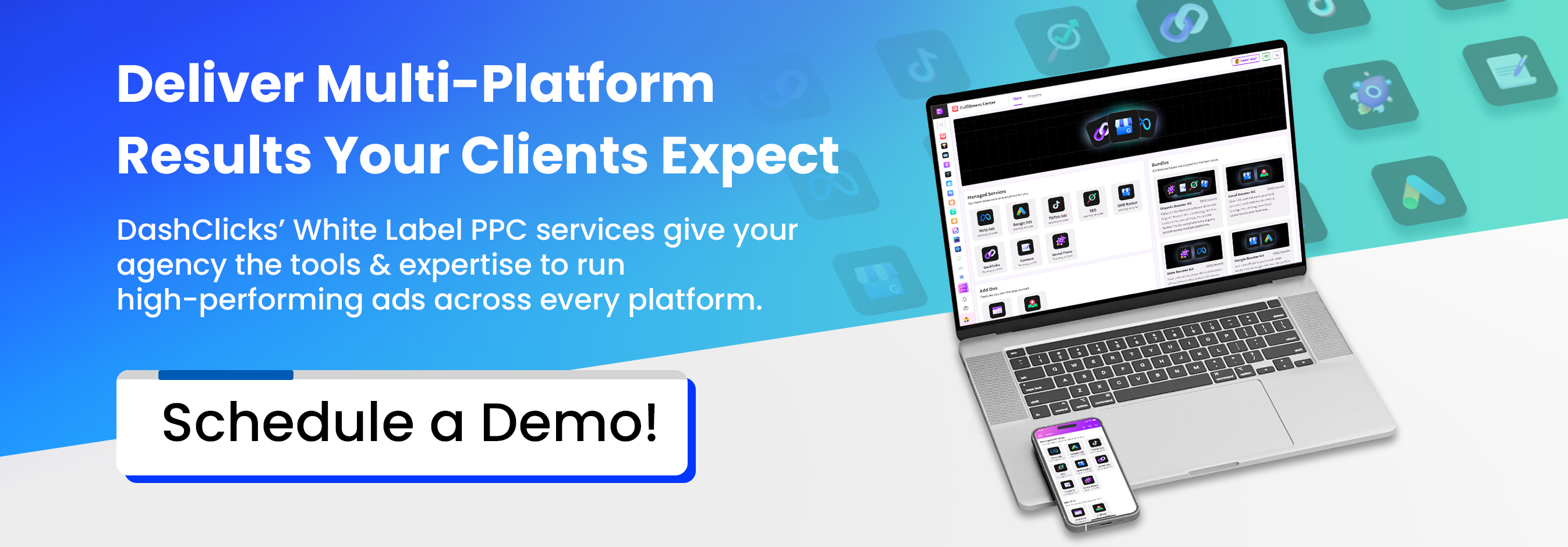
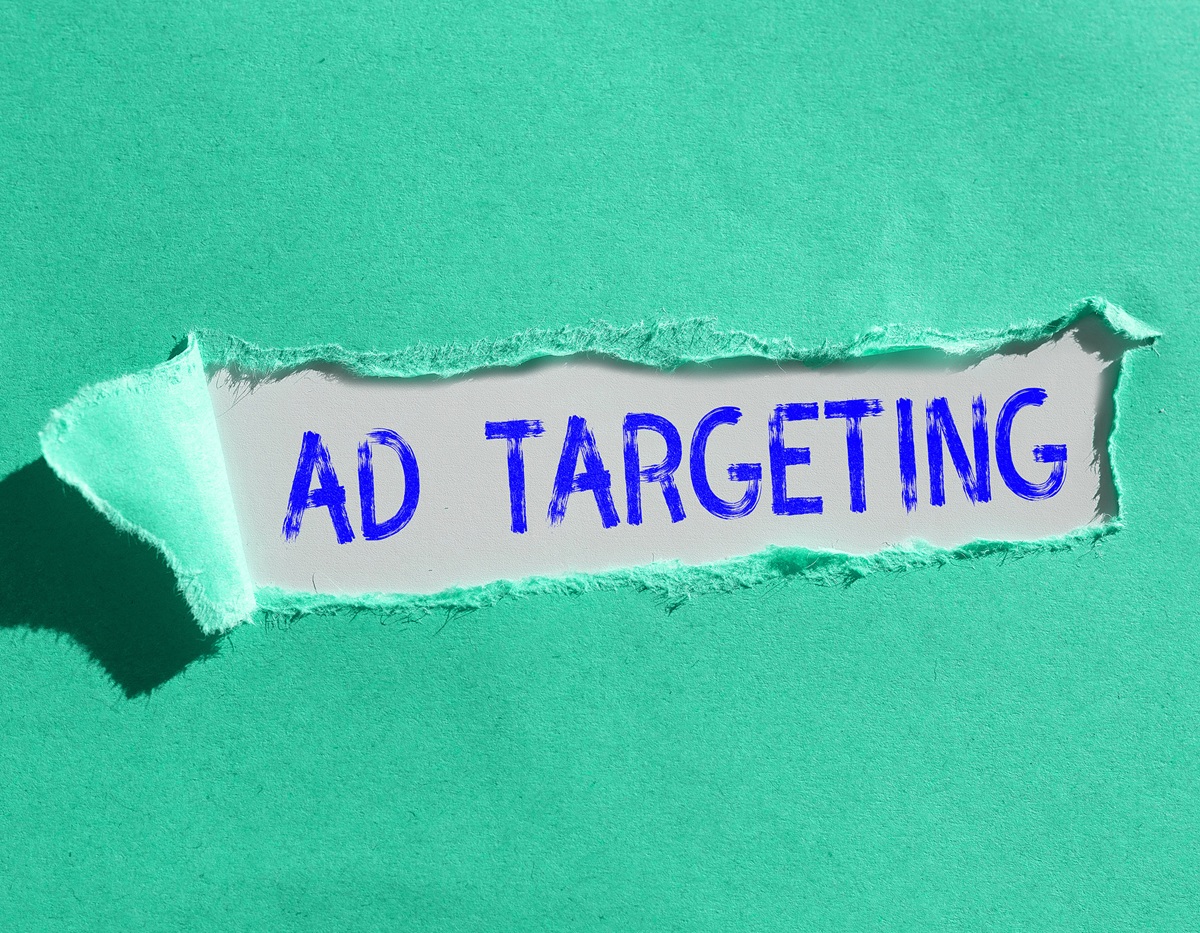
Handling Client Demands for Advanced Targeting Using White Label Facebook Ads Services
When clients start demanding more sophisticated Facebook advertising strategies, many agencies find themselves caught between a rock and a hard place. They want to deliver exceptional results, but advanced targeting requires specialized knowledge, dedicated resources, and constant platform updates that can overwhelm internal teams.
According to recent data from Epsilon, 73% of marketers report that personalized targeting directly improves retention and conversion rates. This statistic highlights why clients are pushing for more advanced approaches—they've seen the potential returns and want their agencies to deliver them.
"Advertisers are moving past reach. They want relevance at scale — and agencies must keep pace," explains Andrew Foxwell, a recognized Facebook Ads strategist. This shift from broad targeting to precision marketing has created new expectations that many agencies struggle to meet.
The solution lies in leveraging Facebook Ads services. These partnerships provide the infrastructure, expertise, and technology needed to execute sophisticated targeting strategies without overwhelming your internal resources or compromising on quality.
Understanding Advanced Facebook Targeting Options
Facebook's advertising platform offers numerous sophisticated targeting capabilities that go far beyond basic demographic and interest-based targeting. Understanding these options is crucial for agencies looking to deliver results that exceed client expectations.
1. Behavioral Segmentation: This approach targets users based on their actual behaviors rather than stated interests. You can reach people based on their purchase intent, browsing habits, and engagement history across Facebook's family of apps. This method proves particularly effective because it focuses on what people do rather than what they say they're interested in.
2. Custom Audiences: Using first-party data like email lists and website visitor information, custom audiences allow you to create hyper-relevant campaigns. These audiences typically perform better because they're built from people who already have some relationship with your client's brand.
3. Value-Based Lookalike Audiences: Rather than creating lookalikes based on all customers, value-based audiences focus on high-value actions. You can weight audiences based on lifetime value, repeat purchases, or other meaningful metrics that matter most to your client's business.
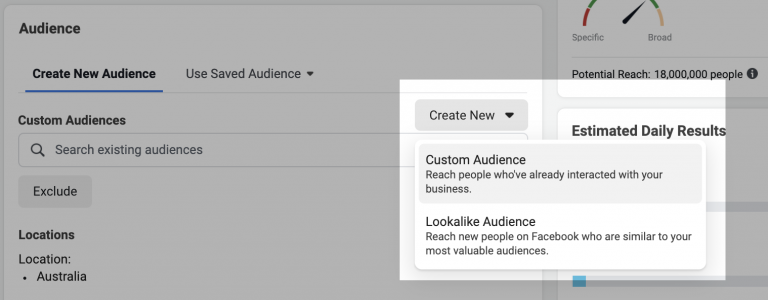
4. Dynamic Retargeting: This feature serves personalized ads based on specific products or services users have viewed. For e-commerce clients, this means showing ads for exact items people looked at, dramatically increasing relevance and conversion potential.
5. Omnichannel Sequencing: Coordinate messaging across Facebook, Instagram, Messenger, and the Audience Network to create cohesive customer journeys. This approach ensures your client's message reaches prospects at multiple touchpoints.
6. Geographic Precision Targeting: Combine offline and online data to target users in specific locations with remarkable accuracy. This proves especially valuable for local businesses or companies with specific geographic focus areas.
7. Predictive Audience Modeling: AI-driven insights help identify high-intent audiences before they've shown obvious buying signals. These predictive models can significantly expand your Facebook ad targeting reach while maintaining quality.
8. Compliance-Focused Targeting: Ensure campaigns meet privacy regulations and Meta's evolving policies while still delivering performance. This becomes increasingly important as data privacy laws continue to evolve.
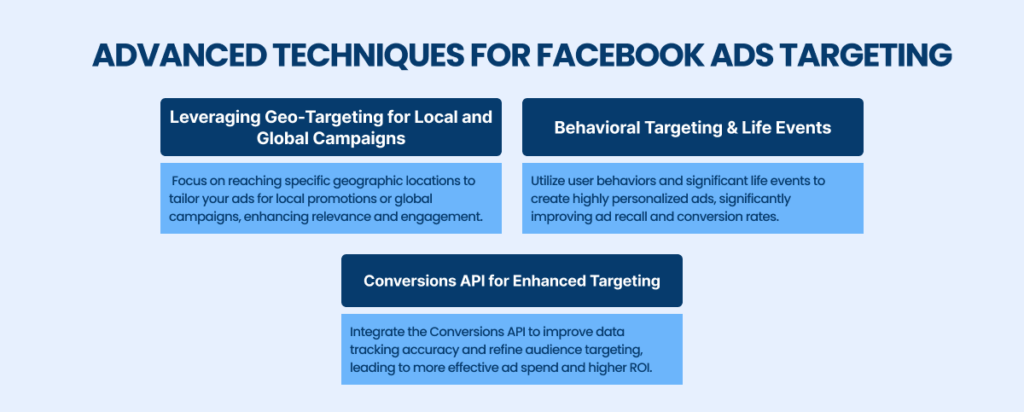
Image Source: Azarian Growth Agency
For example, a SaaS client using predictive lookalike audiences saw trial sign-ups increase by 35% over three months, demonstrating the power of advanced targeting when executed properly.
Why Advanced Targeting Matters for Client Success?
The importance of sophisticated targeting extends beyond simple performance improvements. It fundamentally changes how agencies can serve their clients and build lasting business relationships.
- Improved ROI and Reduced Ad Waste: Advanced targeting ensures ad spend reaches the most relevant audiences, significantly reducing cost per conversion. Instead of casting wide nets and hoping for the best, agencies can focus their budget on prospects most likely to convert.
- Enhanced Client Retention: When clients see measurable results from advanced targeting strategies, they're more likely to continue working with your agency long-term. WordStream's 2024 data shows that agencies leveraging advanced targeting report 30% higher client satisfaction rates.
- Personalized Campaigns at Scale: Advanced targeting enables segmented messaging without dramatically increasing workload. You can create personalized experiences for different audience segments while managing campaigns efficiently.
- Strategic Goal Alignment: These targeting options allow campaigns to align precisely with specific client objectives, whether that's lead generation, e-commerce sales, or appointment bookings. This alignment makes it easier to demonstrate a clear ROI.
For Example, local business campaigns targeting prior buyers and lookalike audiences resulted in 50% higher repeat sales over six months, showing how advanced targeting can drive substantial business impact.
"The future of paid social targeting is less about who we target and more about how we feed the algorithms the right data," notes Jon Loomer, a respected voice in Facebook advertising. This insight emphasizes the importance of data quality and strategic thinking in advanced targeting.

Common Barriers Agencies Face with Advanced Targeting
Despite the clear benefits of sophisticated targeting, many agencies struggle to implement these strategies effectively. Understanding these challenges is the first step toward finding solutions.
- Fragmented Data Sources: Managing multiple clients often means dealing with different CRMs, tracking setups, and offline-to-online data flows. Consolidating these diverse data sources into actionable Facebook audiences requires technical expertise and time that many agencies lack.
- Translating Business Goals into Targeting Signals: Clients typically care about revenue impact, not clicks or impressions. Many agencies struggle to map specific business KPIs like repeat purchases or lead quality into advanced targeting strategies that actually move the needle.
- Client-Specific Niche Requirements: Industries like healthcare, legal, and finance require granular audience segmentation while adhering to strict regulatory requirements. Creating compliant yet high-performance campaigns requires specialized knowledge that most general agencies don't possess.
- Experimentation Fatigue: Advanced targeting often requires iterative testing of custom audiences, dynamic lookalikes, and multi-stage retargeting sequences. Internal teams can quickly become overwhelmed managing multiple experiments simultaneously across different client accounts.
- Inefficient Feedback Loops: Complex funnels and attribution models can make it difficult to interpret performance metrics accurately. Teams may misread data and make suboptimal audience adjustments, wasting time and budget.
- Platform Update Challenges: Meta frequently updates AI-driven audience features like Advantage+ and Conversions API functionality. Agencies without dedicated specialists often fall behind on leveraging these new capabilities quickly.
One example involves a SaaS client who demanded multi-stage lookalikes segmented by product usage, purchase likelihood, and engagement level. The agency's internal team misconfigured the audience sequences, leading to significant wasted spend and a frustrated client relationship.
How White Label Facebook Ads Services Bridge the Gap?
White label Facebook Ads services provide the specialized expertise and infrastructure that agencies need to execute advanced targeting without overwhelming their internal resources.
- Cross-Client Data Normalization and Audience Mapping: A professional white label Facebook ads partner have systems in place to consolidate data from multiple platforms and clients into clean, actionable audiences. They handle the technical complexity of data integration without requiring agency intervention.
- Business-Goal-Aligned Targeting Playbooks: These partners translate revenue and lead-quality goals into proven targeting frameworks. They understand how to create multi-stage retargeting sequences and lifetime-value-weighted lookalikes that actually drive business results.
- Regulatory-Compliant Niche Campaign Design: Specialized teams ensure campaigns for regulated industries like finance, healthcare, and legal services comply with both Meta's policies and industry regulations while maintaining strong performance.
- Scalable Experimentation Management: White label Facebook advertising partners can manage multiple audience experiments simultaneously across different client accounts. They have the bandwidth and systems to optimize campaigns dynamically without overwhelming agency teams.
- Real-Time Adaptive Targeting: Advanced analytics and AI monitoring systems continuously adjust custom audiences, creative rotations, and bid strategies based on performance data. This level of optimization typically requires dedicated specialists.
- Knowledge Transfer and Training: Many white label Facebook advertising partnership include training components that help agencies understand advanced strategies and improve their internal capabilities over time.
A local healthcare agency partnered with a white label service to implement adaptive multi-stage retargeting across Facebook and Instagram. They achieved a 40% reduction in cost per lead within two months while maintaining compliance across multiple HIPAA-relevant ad categories.

How DashClicks Transforms Advanced Facebook Targeting for Agencies?
DashClicks stands out in the white label space by offering comprehensive Facebook advertising services that seamlessly integrate advanced targeting capabilities with user-friendly management tools. Their platform combines sophisticated targeting technology with practical agency workflow solutions.
Their white label Facebook advertising service provides agencies with access to advanced targeting features through an intuitive dashboard that doesn't require extensive technical knowledge. Their team of certified Facebook advertising specialists handles the complex setup and optimization of custom audiences, lookalike segments, and dynamic retargeting campaigns while keeping agencies fully informed about strategy and performance.
What sets DashClicks apart is its focus on data integration and reporting transparency. They connect with existing client data sources to create comprehensive audience profiles, then translate that information into actionable targeting strategies. Their real-time reporting system shows exactly how advanced targeting features contribute to client results, making it easy for agencies to demonstrate value and justify continued investment in sophisticated campaigns.
"The right white-label partner turns complex targeting into a predictable system, letting agencies focus on strategy rather than firefighting," explains Savannah Sanchez, a respected Paid Social strategist. This perspective captures exactly how DashClicks approaches the challenge—by systematizing advanced targeting so agencies can focus on the agency-client relationship and business growth.
Measuring Success: Key Metrics for Advanced Targeting
Implementing advanced targeting requires sophisticated measurement approaches that go beyond basic metrics like clicks and impressions. Agencies need to track metrics that demonstrate real business impact.
- Cost Per Qualified Lead vs. Cost Per Click: While cost per click provides basic efficiency data, cost per qualified lead shows how targeting improvements affect lead quality. Advanced targeting should improve both the quantity and quality of leads generated.
- Customer Lifetime Value by Audience Segment: Track how different audience segments perform in terms of long-term value, not just immediate conversions. This data helps optimize targeting strategies for maximum client profitability.
- Return on Ad Spend by Audience Type: Different targeting approaches will yield different ROAS figures. Understanding which advanced targeting methods deliver the highest returns helps optimize budget allocation.
- Multi-Touch Attribution Metrics: Advanced targeting often involves complex customer journeys across multiple touchpoints. Multi-touch attribution shows how different targeting strategies work together to drive conversions.
- Engagement Quality Indicators: Monitor metrics like video completion rates, form submissions, and time spent on landing pages to understand how audience relevance affects engagement depth.
- Audience Retention and Repeat Engagement: Track how often targeted users return to engage with content or make additional purchases. This indicates the long-term effectiveness of targeting strategies.
- Predictive Performance Tracking: Use AI-driven analytics to identify which targeting approaches are likely to continue performing well based on trend analysis and target audience behavior patterns.
For example, a local healthcare agency tracked both cost per lead and customer lifetime value across different audience segments. They discovered that predictive lookalike audiences had 35% lower initial cost per lead and 25% higher six-month retention rates compared to interest-based targeting.
"Advanced targeting is only as valuable as your ability to prove it works. Track the right metrics and your clients won't just see results—they'll see strategy," advises Molly Pittman, a recognized authority in digital advertising.
Reporting Best Practices
Create branded dashboards that clearly show how advanced targeting contributes to client goals. Include benchmark comparisons and actionable insights that help clients understand the value of sophisticated approaches. Regular reporting should connect targeting improvements directly to business outcomes that clients care about most.
The Strategic Advantage of White Label Partnerships
The digital advertising landscape continues to evolve rapidly, with new targeting capabilities and platform updates arriving regularly. Agencies that try to handle everything internally often find themselves constantly playing catch-up, while those that leverage strategic partnerships can stay ahead of the curve.
White label Facebook Ads services provide more than just execution capabilities—they offer strategic advantages that can transform how agencies serve clients and grow their businesses. These partnerships allow agencies to offer enterprise-level sophistication while maintaining the personal relationships and strategic oversight that clients value.
The key lies in choosing partners who understand that advanced targeting isn't just about technical implementation—it's about translating complex capabilities into measurable business results. The best white label providers act as extensions of your team, bringing specialized expertise while maintaining your brand identity and client relationships.
For agencies ready to elevate their Facebook advertising capabilities without overwhelming their internal resources, white label partnerships represent a practical path forward. They provide the infrastructure, expertise, and ongoing optimization that advanced targeting requires, while allowing agencies to focus on what they do best—building client relationships and driving business growth.
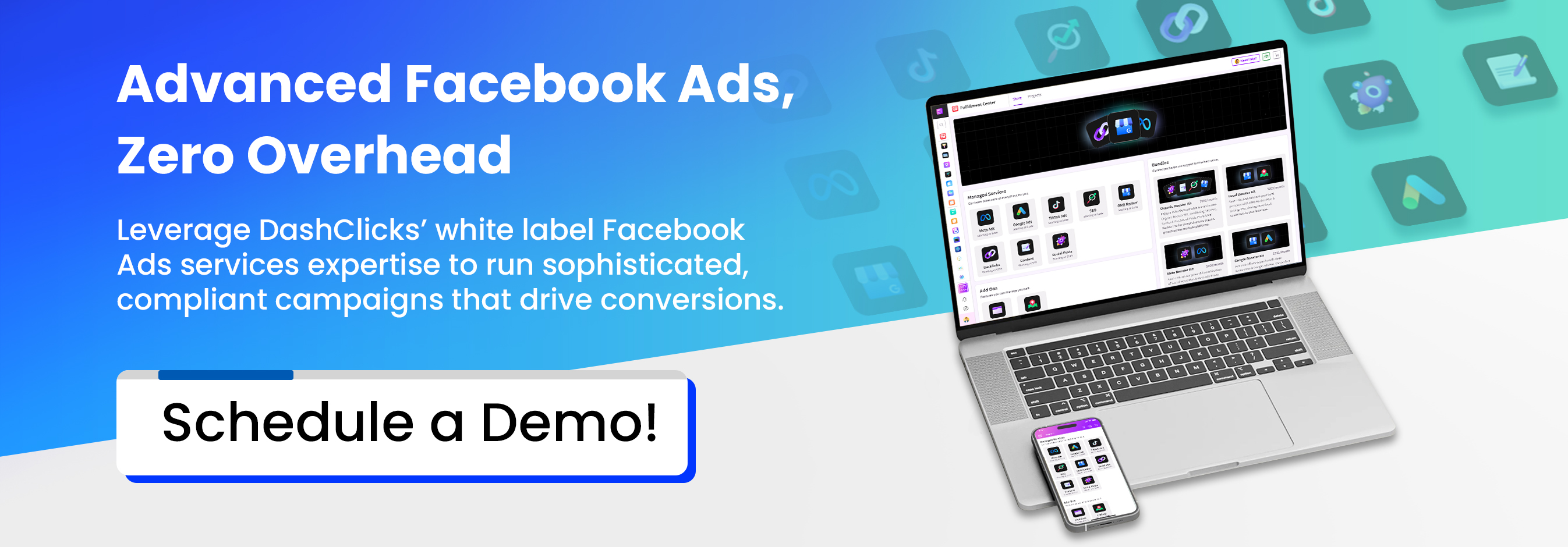
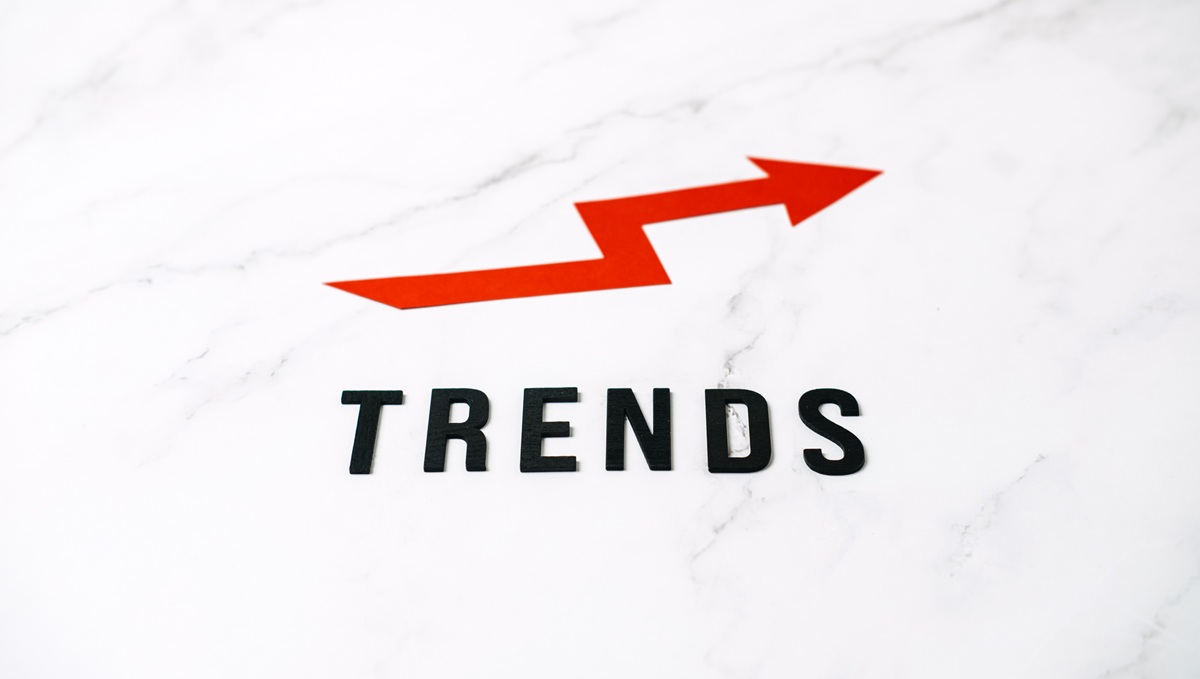
Unlocking Trend-Driven SEO Success: How White Label SEO Services Empower Agencies
The world of SEO is in constant motion. New AI developments, shifts in search behavior, and major platform updates mean that strategies that worked yesterday might be obsolete tomorrow. For marketing agencies juggling multiple clients, staying ahead of this curve is a significant challenge. This isn't just about missing out on the latest buzzwords; it's about failing to deliver the cutting-edge results clients expect.
Keeping up requires constant research, training, and investment in new tools—resources that are often scarce. Agencies find themselves caught in a loop of playing catch-up, unable to proactively integrate new strategies that could drive real growth for their clients.
So, how can an agency innovate without sacrificing the billable hours that keep the lights on? The answer lies in a strategic partnership. A white label SEO provider can bridge this gap, offering the specialized expertise and scalable resources needed to adopt and execute trend-driven strategies. By leveraging a white label SEO partner, agencies can not only keep pace with the industry but also position themselves as leaders, all while focusing on what they do best: building client relationships and growing their business.
The Latest SEO Trends (2024–2025) Agencies Must Adopt
To stay competitive, agencies need to master the trends shaping today’s search landscape. These aren't just minor tweaks; they represent fundamental shifts in how search engines understand and rank content.
1. AI-Powered SEO & Content Automation
Artificial intelligence is no longer a futuristic concept—it's a core component of modern SEO. AI-driven tools are revolutionizing keyword research for SEO, automating content generation, and providing predictive analytics that guide strategy.
For example, an agency partnered with a white label SEO provider could use AI-assisted content briefs to generate topic clusters that perfectly align with user intent, ensuring every piece of content is optimized for maximum impact from the start.
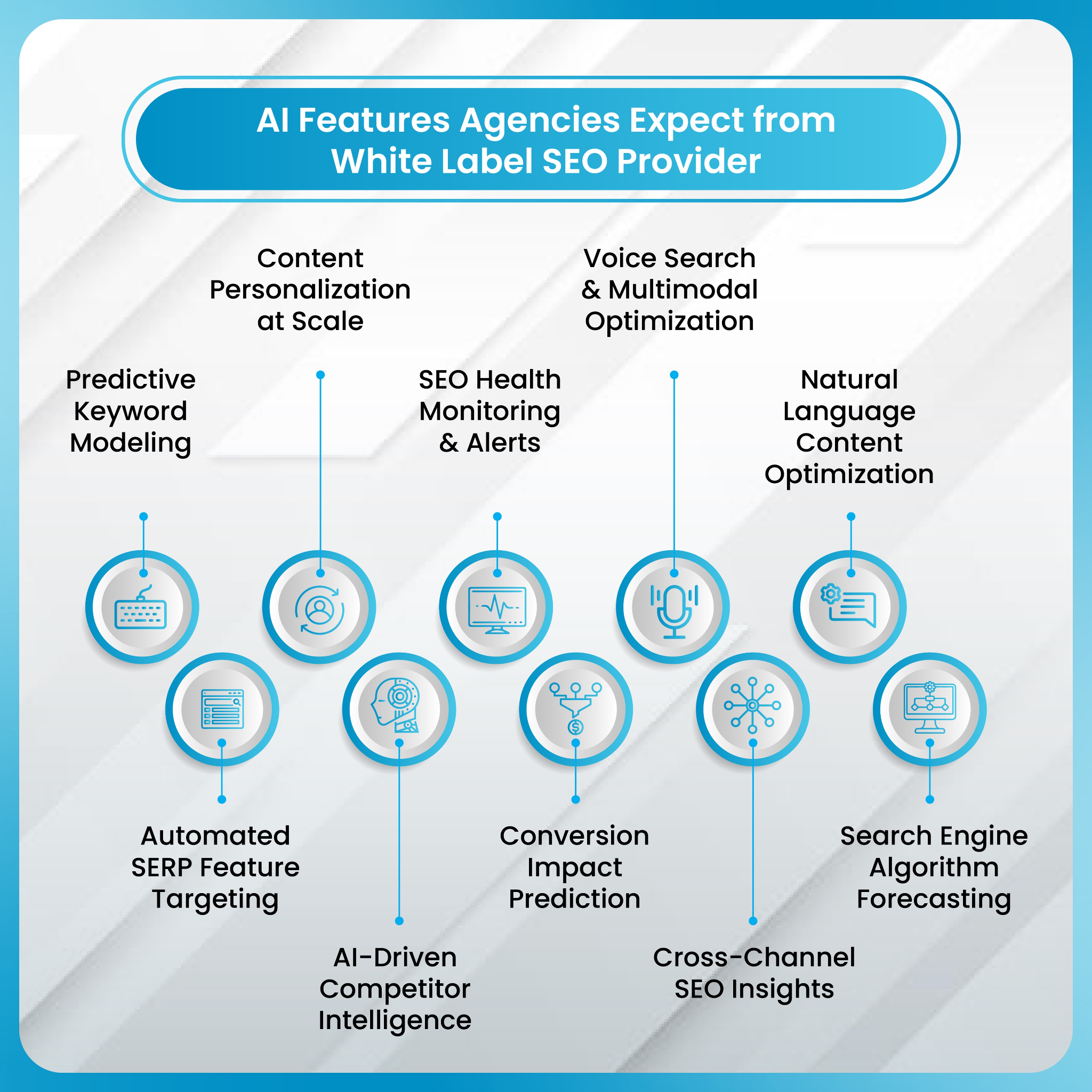
2. Core Web Vitals & User Experience Optimization
Google continues to prioritize user experience, making Core Web Vitals (CWV) non-negotiable. Mobile performance, site speed, and engagement signals are critical ranking factors. A client who sees their page load time improve might also see a 25% decrease in bounce rates, signaling to Google that their site provides a valuable and seamless experience. White label SEO services specialize in the technical optimizations needed to pass CWV assessments, a task that can be resource-intensive for in-house teams.
3. Voice & Visual Search Optimization
The way users search is changing. With the rise of smart speakers and advanced image recognition, optimizing for voice and visual search is essential. According to Pew Research, 40% of adults now use voice search daily. This requires a different approach to keywords, focusing on natural, conversational phrases and structured data that can be easily interpreted by voice assistants and image search algorithms.
4. Local SEO & Hyper-Localization
For businesses with physical locations, local SEO is more important than ever. This goes beyond simple directory listings. A comprehensive strategy includes Google Business Profile optimization, creating localized content, and building local links. For instance, a white label SEO agency helped one local clinic achieve a 3x growth in appointments by focusing on hyper-local tactics that connected them with patients in their immediate community.
5. Video SEO & Rich Snippets
Video content is booming, and optimizing it for search is crucial. Structured data, or schema markup, helps search engines understand the content of a video, making it eligible for rich snippets and featured placements in search results. An e-commerce client, for instance, saw their click-through rate (CTR) improve by 18% after their white label SEO partner implemented structured data for their product videos, making their listings stand out on the SERP.
6. Matching Search Intent
Ranking is no longer just about keywords; it's about aligning your content with what users actually want. Understanding user intent—whether it's informational, navigational, or transactional—is key to creating content that satisfies their needs. Backlinko's 2025 SEO Trends report highlights that failing to meet user intent drastically reduces engagement. Optimizing a client’s page to better match user intent has been shown to increase traffic by as much as 30%, as the content directly answers the user's query.
7. E-E-A-T & Authoritative Content
Google's emphasis on Expertise, Experience, Authoritativeness, and Trustworthiness (E-E-A-T) means that content must be credible and written by experts. Websites demonstrating high E-E-A-T are 40% more likely to rank on the first page. This requires a focus on building author profiles, securing high-quality backlinks, and creating comprehensive, well-researched content that establishes the brand as a trusted authority.
Future-Looking SEO Trends (2026+) Agencies Should Prepare For
The SEO landscape of tomorrow will be even more integrated with AI and focused on providing direct answers. Agencies that prepare for these future trends now will gain a significant competitive advantage.
- AI Search & Generative AI Integration: Predictive search and AI-curated experiences, like Google's AI Overviews, will become standard. Backlinko notes that these AI-generated summaries are already appearing at the top of search results. A white label SEO services partner can help by implementing advanced strategies like AI-driven topic clustering, which has been shown to boost client traffic by 40%.
- Semantic Search & Knowledge Graph Optimization: SEO will move further away from keywords and toward entities and concepts. Optimizing content with structured data to feed Google's Knowledge Graph will be essential for visibility. Pages with structured data are far more likely to appear in rich snippets, making them more prominent on the SERP.
- Cross-Platform Search Optimization: The search doesn't just happen on Google. Optimizing for Bing, Amazon, YouTube, and even social platforms like TikTok is becoming critical. An e-commerce client, for example, saw a 30% increase in sales after adopting a multi-platform SEO strategy that targeted customers where they shop and search.
- Zero-Click Searches & Declining CTRs: The rise of AI summaries and featured snippets means more searches will end without a click. As Backlinko points out, this contributes to the growth of "zero-click searches." The focus must shift from just driving clicks to optimizing for visibility within these snippets and rich results to ensure the brand's message is seen.
- Brand Presence as an Authority Signal: Brand mentions, even without a link, will increasingly influence rankings. Backlinko’s research suggests that search engines view unlinked mentions as a signal of authority. A SaaS company, for instance, may rank higher simply due to consistent brand mentions across industry blogs and forums.
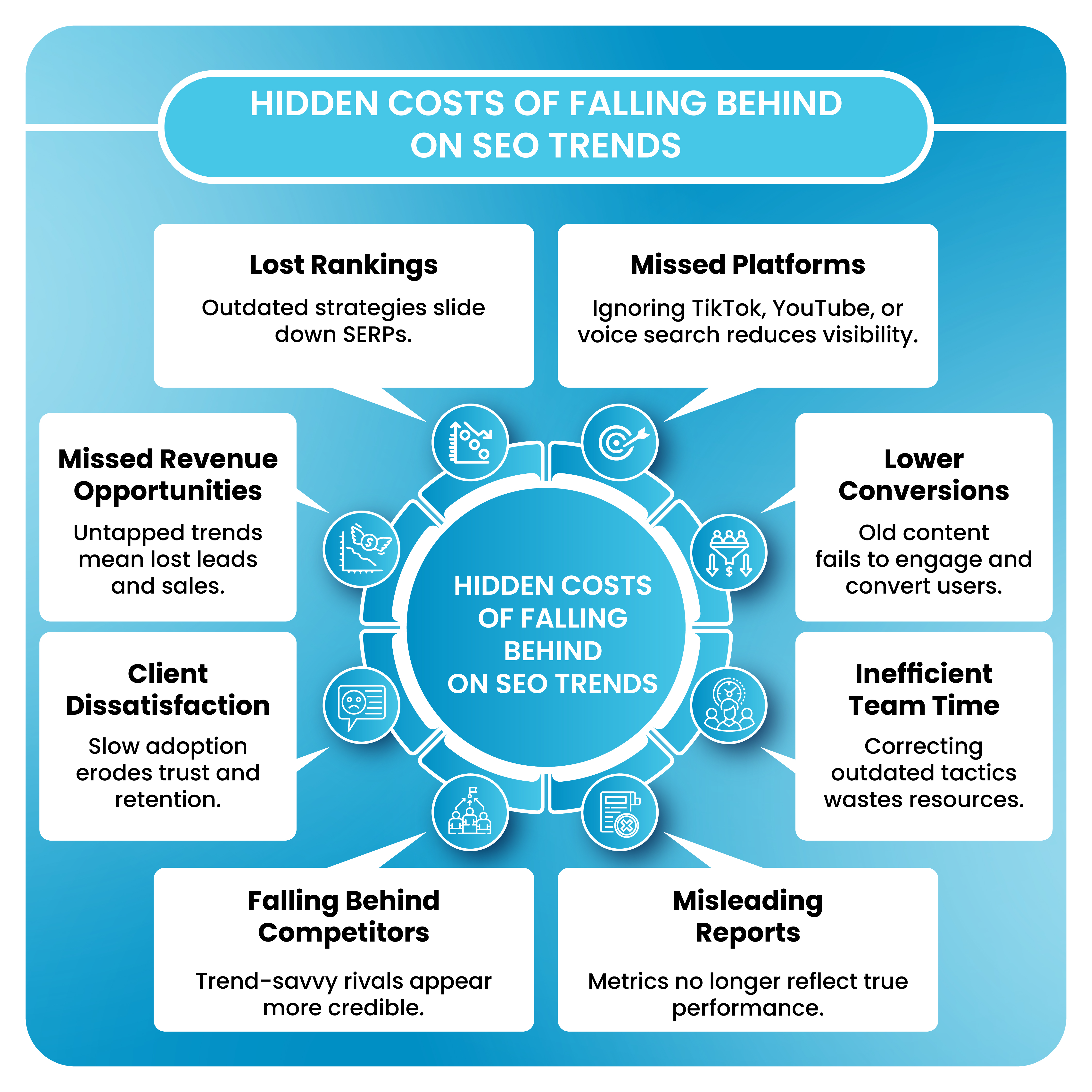
Why Do Agencies Struggle to Implement SEO Trends?
Knowing the trends is one thing; implementing them is another. Many agencies face significant internal hurdles that prevent them from staying ahead.
- Innovation vs. Billable Hours Conflict: Agencies generate revenue by servicing clients, not by investing in R&D. Time spent experimenting with AI-assisted clustering or optimizing for zero-click searches is time not spent on billable work, leaving agencies in a reactive, not proactive, position.
- Difficulty Scaling Niche-Specific Trend Adoption: SEO trends are not one-size-fits-all. A healthcare client may need HIPAA-compliant AI solutions, while an e-commerce client wants predictive search optimization. Most agencies lack the specialized bandwidth to tailor trend adoption across multiple industries at once.
- Lag Between Trend Emergence and SOP Creation: Implementing new SEO trends requires structured processes and workflows. Developing these standard operating procedures (SOPs) internally can take months. By the time they are ready, the trend is already mainstream, and the competitive advantage is lost.
- Talent Drain & Specialist Burnout: SEO specialists with cutting-edge skills are in high demand and are often expensive. Agencies frequently find themselves in a costly cycle of hiring, training, and losing top talent to larger in-house roles, making it impossible to sustain long-term trend adoption.
- Inconsistent Data Across Platforms: Analyzing trends requires accurate data from multiple sources, like SERP volatility from Semrush and CTR shifts from Google Search Console. Agencies can waste countless hours trying to reconcile conflicting data, which delays execution and hinders strategic decision-making.
- Fear of Over-Promising Trend Outcomes: Clients expect guaranteed ROI, but future-looking trends like generative AI search come with uncertainty. This hesitation causes agencies to miss valuable opportunities to position themselves as industry innovators and leaders.
How White Label SEO Services Help Agencies Adopt Trends?
This is where a white label SEO partner becomes a game-changer. They provide the infrastructure, expertise, and resources to overcome these challenges, allowing agencies to thrive.
- Plug-and-Play SOPs for Trend Adoption: White label SEO providers come equipped with proven frameworks for implementing new trends. They already have established SOPs for structured data, semantic search, and AI-driven content mapping, allowing agencies to bypass the lengthy internal development phase and start executing immediately.
- Cross-Vertical Trend Benchmarking: With experience managing hundreds of campaigns across various industries, white label providers offer invaluable insights. They know which trends deliver results in healthcare versus SaaS or e-commerce, enabling agencies to make data-driven decisions instead of guessing.
- Elastic Resourcing for Trend Spikes: Trends like video SEO or interactive content creation can create sudden demands for production that an in-house team can't meet. A white label service provides "on-demand" bandwidth, allowing agencies to scale up or down as needed without the burden of over-hiring.
- Access to Beta Tools & Early Trend Insights: Many white label providers have strong relationships with SaaS companies and often gain early access to beta features, like AI-driven SERP forecasting. This gives their agency partners a first-mover advantage.
- Risk-Buffered Experimentation Layer: A white label SEO partner can run small-scale trend pilots behind the scenes, testing new strategies before they are presented to clients. This allows agencies to innovate and appear forward-thinking while minimizing any potential risk to client campaigns.
- Client Expectation Management via White Label Reporting: Like DashClicks’ Analytics Software , which can be customized to highlight metrics tied directly to trend adoption, such as entity coverage or zero-click visibility. This helps reframe client conversations from being solely about rankings to focusing on overall visibility in an evolving search landscape.

How DashClicks Unlocks Trend-Driven Success?
Platforms like DashClicks are specifically designed to empower agencies by providing fully integrated white label SEO services. DashClicks combines powerful software with expert fulfillment services, allowing agencies to resell cutting-edge SEO under their own brand.
The platform offers a suite of tools for everything from analytics and reporting to lead generation and project management. This means an agency can instantly offer sophisticated services like advanced user experience optimization, AI-powered content strategies, and cross-platform SEO without needing to build the infrastructure or hire specialized teams.
With DashClicks, agencies can confidently sell trend-driven SEO, knowing they have a reliable partner to handle the execution, all while they focus on scaling their business and delighting their clients.
Measuring the Impact of Trend-Driven SEO: Key Metrics
To demonstrate the value of these advanced strategies, agencies need to track the right metrics. The old way of just looking at rankings is no longer enough.
- Search Visibility Beyond Rankings: As Rand Fishkin famously said, "Visibility is the new click." Track your presence in SERP features like featured snippets, People Also Ask boxes, and video carousels. Semrush data from 2023 showed that 65% of Google searches ended without a click, underscoring the importance of being seen, even if it doesn't lead to a website visit.
- Zero-Click Performance: Monitor how your CTR is trending. According to Backlinko, the CTR for the #1 position dropped to 27.6% in 2023. Analyze post-click engagement metrics like time on page and bounce rate to understand the quality of the traffic you are receiving.
- Entity & Semantic Signals: Go beyond keywords and measure entity salience and topic cluster coverage. As the late, great Bill Slawski put it, "Google is moving from strings to things." This shift to understanding concepts makes entity-based SEO crucial.
- Content Experience: Track Core Web Vitals, scroll depth, and video engagement. Google has confirmed that passing CWV can lead to a 24% lower bounce rate, proving that a better user experience directly impacts performance.
- Brand Authority (E-E-A-T): Monitor backlink quality, author bios, and external citations. A 2024 survey by Search Engine Journal found that 64% of marketers prioritize E-E-A-T. As SEO expert Marie Haynes notes, "Without E-E-A-T, rankings are temporary."
- Cross-Platform SEO: Measure your visibility on YouTube, Bing, and even TikTok. Google reported in 2022 that 40% of Gen Z now prefer using TikTok or Instagram for search, highlighting the need for a multi-platform approach.
- Business Impact (Client-Facing): Ultimately, clients care about the bottom line. Track leads, conversions, cost-per-acquisition (CPA), and the share of revenue driven by organic traffic. Data from BrightEdge shows that organic search drives 53% of all website traffic and 44% of revenue. As Aleyda Solis says, "SEO without ROI is vanity."
Partner for a Future-Proof Agency
Staying competitive in the fast-paced world of SEO requires more than just keeping up; it demands a proactive, forward-thinking approach. For most agencies, the internal resources needed to innovate, test, and scale new trends are simply out of reach. This is where the power of a white label SEO partnership becomes clear.
By leveraging the expertise, tools, and established processes of a white label SEO provider, agencies can instantly elevate their service offerings. They can deliver cutting-edge, trend-driven SEO that produces real results for clients, freeing up internal resources to focus on growth and client relationships. The fastest-growing agencies are those that are trend-savvy, and they use white label SEO partners to execute advanced strategies at scale. Don’t just react to the future of SEO—lead the charge.
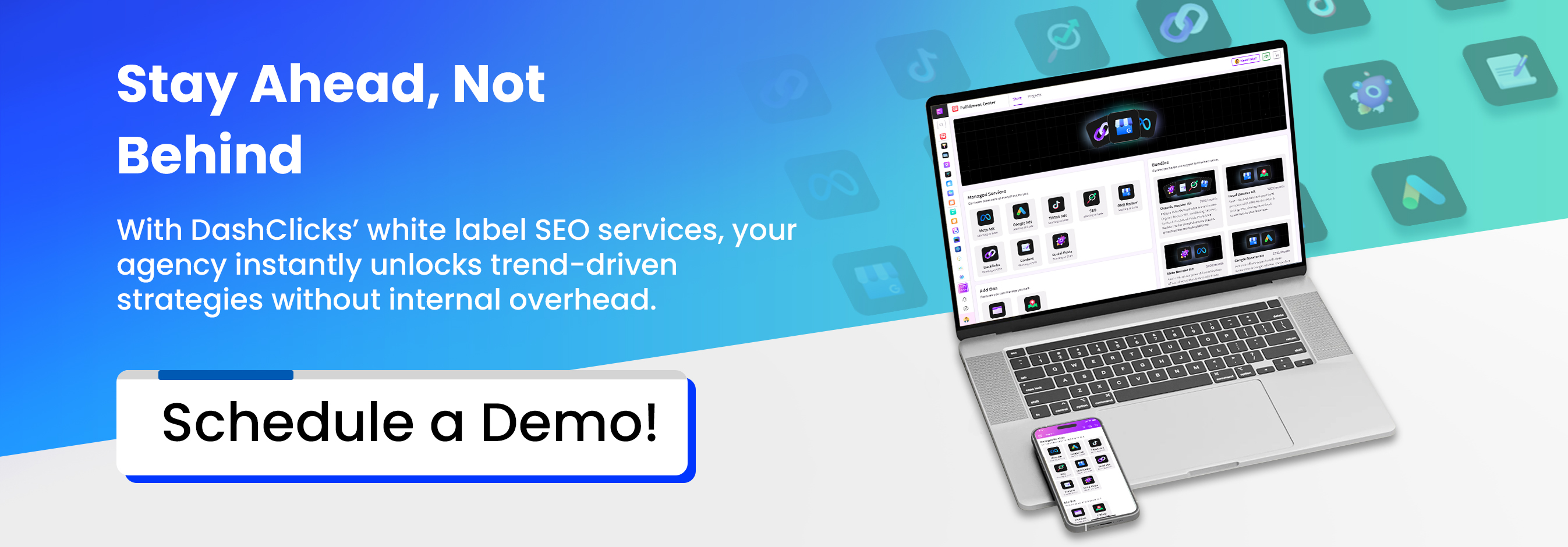

Common Pitfalls Agencies Face When Choosing a White Label PPC Partner
PPC advertising is unforgiving territory where every dollar matters. When global digital ad spend reached $667 billion in 2023, with PPC accounting for over 40% of total spend according to Statista, clients began expecting sophisticated handling of their investment. One poorly optimized campaign can instantly erode trust and destroy margins that took months to build.
Many agencies turn to white label PPC partners to scale operations and access specialized expertise. However, choosing the wrong partner can be catastrophic. Unlike other marketing services where mistakes unfold over weeks, PPC failures are immediate and measurable. Your clients see the results in real-time through their ad platform dashboards.
This guide reveals the specific pitfalls that plague agencies when selecting white label PPC services, going beyond generic outsourcing risks to address the unique challenges of pay-per-click advertising partnerships.
Pitfall 1: Choosing Based on Cost Instead of Value
The most dangerous trap agencies fall into is selecting the cheapest white label PPC agency available. These budget providers typically rely on cookie-cutter campaign setups and neglect the ongoing optimization that PPC demands.
Successful PPC campaigns require constant attention. Bid adjustments, keyword refinement, ad copy testing, and audience targeting need regular updates based on performance data. Cost-cutting partners skip these crucial optimizations to maintain their low prices.
Consider this reality: saving $500 on monthly management fees can easily result in thousands of dollars in wasted ad spend. Poor keyword targeting, ineffective ad copy, and suboptimal bidding strategies drain budgets faster than you can imagine.
As Brad Geddes, Co-Founder of AdAlysis, puts it: "In PPC, you don't save money by underpaying your strategist — you burn it twice as fast in wasted ad spend."
The math is simple. A 20% improvement in campaign performance on a $10,000 monthly ad budget delivers $2,000 in additional value. A cheap partner who saves you $300 but reduces performance by 15% actually costs you $1,500 in lost results.
Pitfall 2: Lack of Niche or Industry Experience
PPC strategy varies dramatically across industries. A partner excelling in e-commerce campaigns may struggle with local lead generation or B2B SaaS due to fundamental differences in customer journeys, conversion tracking, and success metrics.
Legal industry keywords can cost over $50 per click, according to WordStream's 2024 data. Healthcare, insurance, and financial services face strict compliance requirements that inexperienced partners often overlook. E-commerce campaigns focus on ROAS and shopping feeds, while B2B companies prioritize lead quality and sales cycle alignment.
When agencies become the "test case" for a partner's first foray into their industry, the learning curve comes at the client's expense. An agency specializing in dental practices needs a white label PPC partner who understands patient acquisition costs, local search behavior, and dental-specific compliance issues.

Pitfall 3: Poor Transparency in Budget Allocation
Some white label PPC partners obscure how they allocate client budgets between actual ad spend and management fees. This lack of transparency becomes problematic when clients demand detailed breakdowns of their investment.
Hidden markups on ad spend, bundled fees that combine multiple services, or unclear reporting on where dollars actually go create trust issues. In PPC, clients can log directly into Google Ads or Facebook Ads Manager to see their spending. If your partner's numbers don't align with platform data, you'll face difficult conversations with clients.
Kirk Williams from ZATO Marketing emphasizes: "Agencies live or die on transparency. Clients can log into Google Ads anytime. If your partner isn't aligned, it will come back to bite you."
Transparent partners provide clear breakdowns showing exactly how much goes toward ad spend versus management fees, platform costs, and any additional charges.
Pitfall 4: Overreliance on Automation Without Strategy
Many PPC partners lean heavily on Google's automated bidding and Smart Campaigns to reduce manual work. While automation tools are powerful, they require strategic oversight to deliver optimal results.
Automated bidding strategies need proper conversion tracking setup, historical data for machine learning, and ongoing monitoring to prevent budget waste. Smart Shopping campaigns can perform well but may lack the granular control needed for competitive industries.
According to Hanapin Marketing's 2023 survey, 32% of marketers cite "lack of strategic oversight with automation" as their top PPC concern. Clients expect strategic differentiation, not a "set-and-forget" approach that any competitor can replicate.
One agency reported a 35% drop in ROAS after switching to Smart Shopping campaigns without proper oversight. The automated system is optimized for volume rather than profitable conversions, leading to budget waste on low-value traffic.
Pitfall 5: Weak Communication and Reporting Cadence
PPC performance fluctuates daily based on competition, seasonality, and market conditions. Slow or generic reporting fails to address the dynamic nature of paid advertising and undermines client confidence.
Some partners send monthly spreadsheet reports without actionable insights or context for performance changes. This approach ignores the fact that PPC campaigns may need immediate adjustments when performance drops or opportunities arise.
According to Search Engine Journal's 2023 research, 62% of clients rank "transparent reporting" as the #1 factor in agency retention. Agencies need partners who provide white-labeled dashboards, proactive communication about campaign changes, and clear explanations for performance variations.
Effective partners establish crisis management protocols for account suspensions, policy violations, or sudden performance drops that require immediate attention.
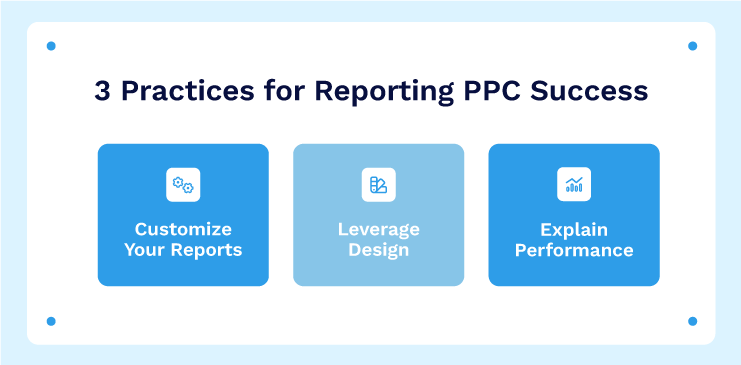
Image Source: AdClicks
Further Reading: PPC Reporting Strategies: 11 Things You Should Include in a PPC Report
Pitfall 6: One-Size-Fits-All Campaign Structures
Lazy PPC partners reuse identical campaign structures across all clients regardless of industry, goals, or market conditions. This approach leads to poor Quality Scores, higher costs per click, and reduced competitiveness.
Campaign structures should reflect the customer journey, geographic targeting requirements, and specific business objectives. A law firm needs different ad groups and keywords than an e-commerce store, even if both target local customers.
Generic approaches often use broad keyword groups, templated ad copy, and rigid bidding structures that don't account for client-specific factors. This results in irrelevant traffic, wasted budget, and missed opportunities for better-targeted messaging.
Pitfall 7: Compliance and Policy Blind Spots
Regulated industries like finance, healthcare, legal services, and housing face strict advertising policies across all major platforms. An inexperienced partner who doesn't understand these requirements can trigger account suspensions or policy violations.
Google blocked 5.5 billion ads in 2023 for policy violations, according to its Ads Transparency Report. Account suspensions not only halt advertising efforts but can also impact organic search rankings and overall online presence.
Financial services ads must comply with truth-in-lending requirements. Healthcare advertisements need specific disclaimers and cannot make certain medical claims. Real estate ads face fair housing compliance issues.
Agencies working with regulated clients must verify that their white label PPC agency has specific experience navigating industry policies and compliance requirements.
Pitfall 8: Lack of Agility in Scaling Campaigns
PPC campaigns often need rapid scaling during promotions, product launches, or seasonal opportunities. Some partners struggle with sudden budget increases or multi-platform expansion requirements.
Successful scaling requires experience with increased competition at higher spend levels, budget pacing across multiple campaigns, and integration between Google Ads, Facebook Ads, LinkedIn, and other platforms.
Frederick Vallaeys, Co-Founder of Optmyzr, notes: "In PPC, velocity matters. If your partner can't scale campaigns in real time, you're playing catch-up while competitors capture market opportunities."
Agencies miss revenue opportunities when their white label PPC partner cannot quickly expand successful campaigns or launch complementary advertising efforts across multiple channels.
Pitfall 9: Misaligned Success Metrics
Some white label PPC partners focus on vanity metrics like clicks, impressions, and click-through rates instead of business outcomes like return on ad spend (ROAS), cost per lead (CPL), or customer acquisition cost (CAC).
Campaigns may appear successful based on engagement metrics while failing to generate profitable results for the client. This misalignment becomes obvious when clients compare advertising investment to actual revenue or lead generation.
According to Gartner's 2023 research, 76% of CMOs demand ROI-based reporting from agencies rather than traffic-focused metrics. Agencies risk client churn when they cannot connect PPC performance to business growth.
Melissa Mackey, Paid Search Consultant, explains: "If your PPC partner can't connect metrics to pipeline or sales, they're optimizing for themselves, not for you."
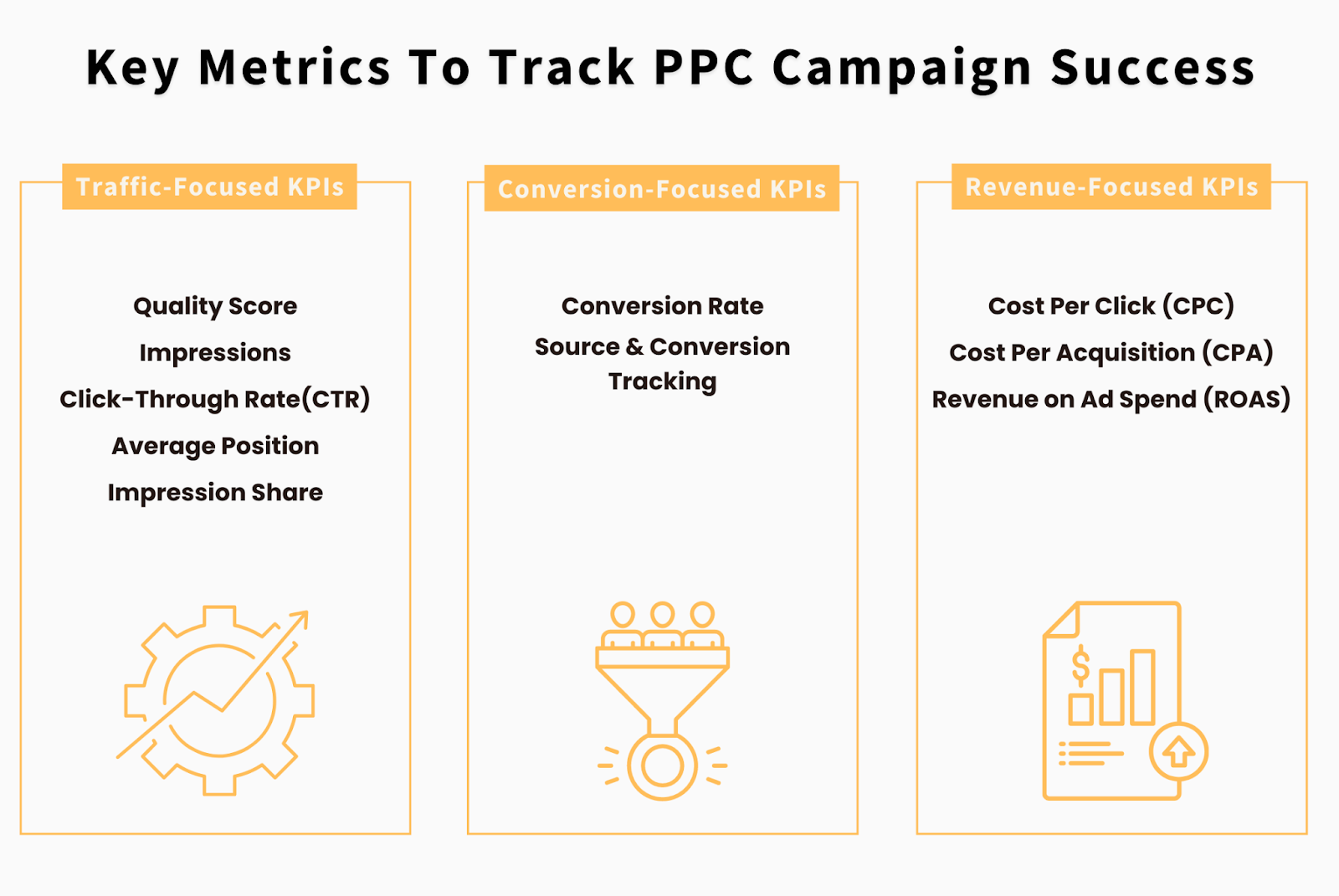
Pitfall 10: Lack of White-Labeling Quality
Professional white-labeling goes beyond removing a vendor's logo from reports. It requires seamless integration with agency branding, consistent communication protocols, and maintaining the illusion that all work originates from the agency.
Poor white labeling reveals the outsourcing arrangement to clients, which can undermine the agency's positioning as the expert and reduce perceived value. Clients may question why they're paying agency rates for outsourced work.
Quality white label PPC services include branded dashboards, consistent design elements, agency-specific language and terminology, and communication that reinforces the agency's expertise and relationship with the client.
Pitfall 11: Mistaking Surface-Level Case Studies for True PPC Expertise
Many vendors showcase impressive ROAS screenshots and performance highlights without providing context about campaign duration, industry factors, or budget levels. These cherry-picked examples can create unrealistic expectations.
According to HubSpot's 2024 research, 68% of agencies cite a lack of transparent reporting from white-label partners as a major client retention issue. Performance examples without context hide potential inconsistencies in account management quality.
Brad Geddes from AdAlysis advises: "Numbers without context are dangerous. Always demand to see both wins and failures across multiple accounts to understand a partner's true capabilities."
Agencies should request detailed case studies showing challenges faced, strategies implemented, and results achieved over extended periods rather than isolated success metrics.
Pitfall 12: Lack of International Targeting Competence
Global campaigns require an understanding of cultural nuances, local keyword research, currency considerations, and region-specific platform policies. Partners unprepared for international expansion create missed opportunities with global clients.
Multi-language campaigns need native speakers for ad copy creation and cultural adaptation beyond literal translation. Time zone management, local competition analysis, and region-specific bidding strategies require specialized expertise.
Agencies working with international clients or those planning global expansion need a white label PPC agency with proven multi-region campaign management experience.
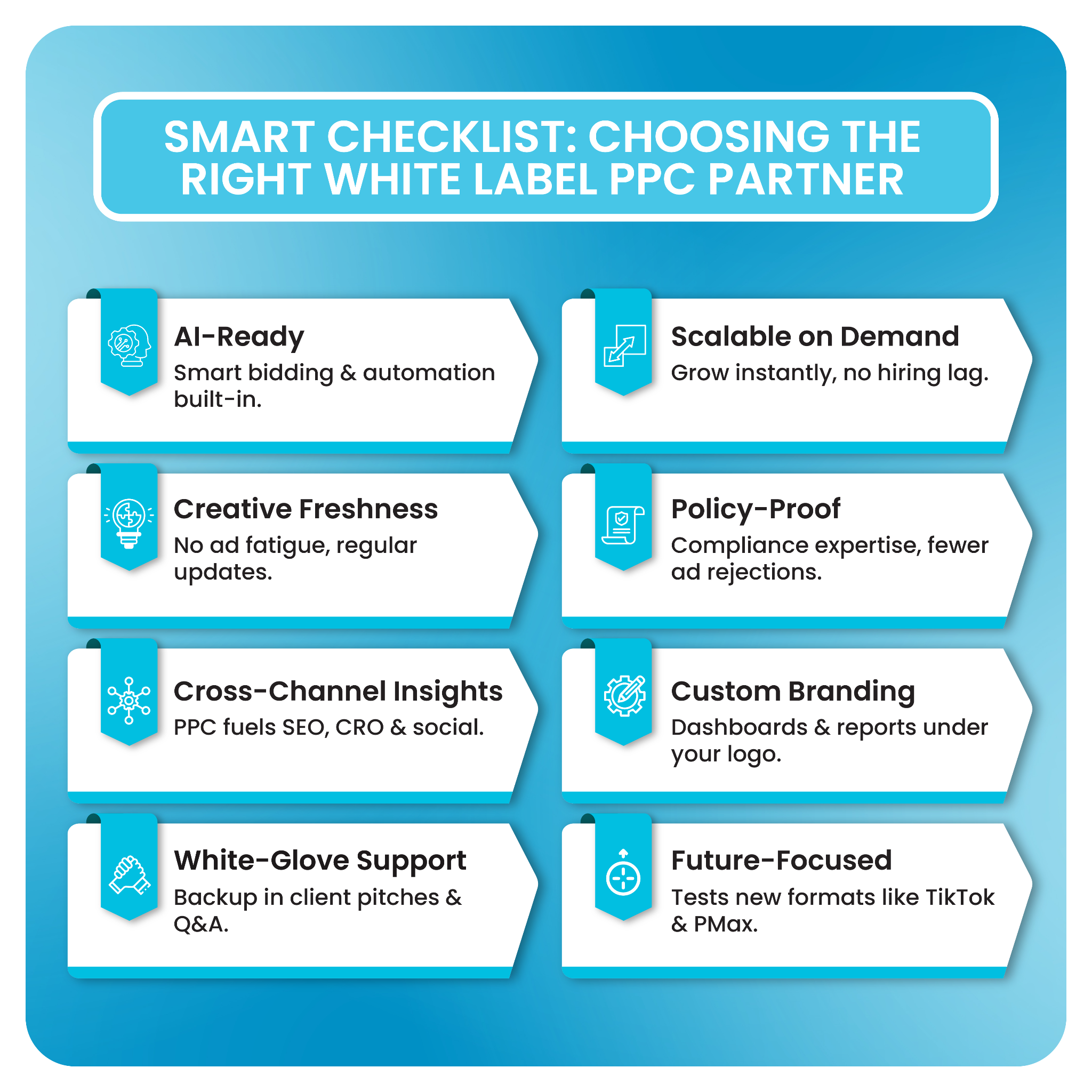
Future-Proofing Against PPC Partner Risks
The PPC landscape evolves faster than most digital marketing channels. Platform policy changes, new automation features, privacy regulations, and tracking limitations require partners who anticipate and adapt to industry shifts.
Key areas to evaluate when assessing future readiness include:
- Adaptability to Platform Changes: Partners must stay current with Google Ads, Facebook Ads, and emerging platform updates while maintaining campaign performance during transitions.
- Privacy and Tracking Solutions: iOS updates, cookie deprecation, and privacy regulations require partners skilled in server-side tracking, conversion modeling, and first-party data strategies.
- AI and Automation Management: Rather than blindly implementing automated features, effective partners guide automation with strategic oversight and performance monitoring.
- Regulated Industry Compliance: Partners should maintain current knowledge of advertising policies for sensitive verticals and proactive compliance protocols.
- Crisis Response Systems: Rapid response capabilities for account suspensions, policy violations, or sudden performance drops protect client relationships.
- Long-Term Risk Communication: Partners should proactively alert agencies about industry changes, potential compliance issues, and emerging competitive threats.
Frederick Vallaeys emphasizes: "A partner who only optimizes for today is already behind. The real value is in anticipating the next disruption before it hits."
How DashClicks Helps Agencies Avoid These Pitfalls?
DashClicks addresses these common white label PPC challenges through its comprehensive approach to digital marketing partnerships. Their platform provides transparent reporting with real-time dashboards that agencies can white-label for clients, ensuring complete visibility into campaign performance and budget allocation.
With years of experience across multiple industries, DashClicks brings specialized knowledge to regulated sectors like healthcare, legal, and finance while maintaining strict compliance standards. Their integrated approach combines PPC management with broader digital marketing services, allowing agencies to scale efficiently without compromising quality.
DashClicks maintains dedicated account managers who understand the urgency of PPC optimization and provide proactive communication about campaign changes, performance fluctuations, and optimization opportunities. This level of service ensures agencies never face the communication gaps that often damage client relationships in white label partnerships.
Making the Right Partnership Decision
Choosing a white label PPC partner represents more than a vendor selection—it's an investment in your agency's reputation and growth potential. The wrong choice wastes client budgets, damages relationships, and limits scalability. The right partner amplifies your expertise, protects your margins, and enables confident growth.
Use this comprehensive pitfall checklist during your evaluation process. Prioritize transparency, industry expertise, and communication quality over cost savings. Remember that in PPC advertising, the cheapest option often becomes the most expensive mistake.
Your clients trust you with their advertising investment. Choose a white label PPC partner who honors that trust with the same commitment to excellence you bring to your agency relationships.


How White Label SEO Providers Help Agencies Handle Unrealistic Client Expectations
In the world of digital marketing, few challenges are as frustrating for agencies as managing client expectations around SEO. Many business owners expect SEO to work like a paid ad campaign: immediate results, guaranteed rankings, and exponential growth on a tight budget. When these expectations aren’t met, clients often lose trust, leading to churn and negative word-of-mouth.
But here’s the truth: unrealistic client expectations are not going away anytime soon. What agencies can do, however, is find effective ways to counter them. This is where white label SEO services play a crucial role. By outsourcing SEO to a trusted provider, agencies get the expertise, tools, and data they need to manage expectations and deliver results without burning out their team.
Let’s explore why unrealistic expectations exist, the consequences of not addressing them, and how white label SEO for agencies can turn these challenges into opportunities for long-term client retention.
Why Unrealistic Expectations Exist in SEO?
Agencies often face the same types of client misunderstandings about SEO. Here are the key reasons behind them:
- Information Asymmetry: SEO is technical, and most clients only see the results, not the process. Without insight into the work involved, they underestimate the time and effort required.
- Misinformation Online: Countless “SEO gurus” on YouTube and blogs push guarantees like “Rank #1 in 30 days,” setting unrealistic benchmarks.
- Competitor Pressure: Clients sometimes compare agencies based on false promises, such as another company guaranteeing first-page rankings.
- Budget vs. Outcome Mismatch: Small businesses often expect enterprise-level results while spending at a fraction of the required budget.
- Lack of Upfront Education: Agencies that don’t clearly explain SEO timelines and deliverables often end up dealing with frustrated clients later.
The Consequences of Mismanaged Expectations
When expectations aren’t addressed early, both agencies and clients pay the price.
For Agencies:
- Increased churn and client dissatisfaction.
- Team burnout from chasing impossible promises.
- Damage to long-term credibility.
For Clients:
- Wasted budget on unrealistic goals.
- Frustration and eventual distrust in SEO as a service.
The opportunity lies in bridging this gap. Agencies that educate clients and manage expectations retain business longer and build a reputation for honesty and reliability. White label SEO providers provide agencies with the tools and support to make this possible.
Expectation #1: “We Want Immediate Rankings and Traffic”
The Challenge
Many clients come into SEO with the mindset that, because they’ve seen paid ads get visibility instantly, or read persuasive case studies about rapid jumps in ranking, SEO should operate the same way. This misunderstanding leads to pressure on agencies to “do something fast” — whether or not it’s realistic.
In truth, SEO is often a multistage, cumulative process: technical foundations, on-page content, link authority, user experience, and iterative optimization all need time to gel. According to a recent assessment:
- You can generally expect tangible improvements (impression upticks, ranking shifts, and early traffic) within 3 to 6 months.
- Full competitive breakthroughs (especially in tough niches) often take a year or more.
- Industry ROI studies show that positive ROI from SEO often falls in the 6–12 month window; some niches even have their breakeven in the second or third year.
That disconnect—between client expectations and real search dynamics—is a prime source of frustration.
Provider Solutions
1. Use Forecasting Tools to Show Realistic Timelines (3, 6, 12 Months)
Rather than leaving timelines vague, a white label SEO agency can build forecast models. These models can combine:
- Historical data from similar clients/niches.
- Keyword difficulty vs. existing visibility.
- Domain authority and backlink metrics.
- Market competitiveness and seasonal fluctuations.
Then agencies can present a phased plan:
- Month 1–3: Foundation, technical cleanup, content gap identification.
- Month 4–6: Content rollout, initial link acquisition, early ranking growth.
- Month 7–12: Momentum building, targeting higher volume keywords, compounding gains.
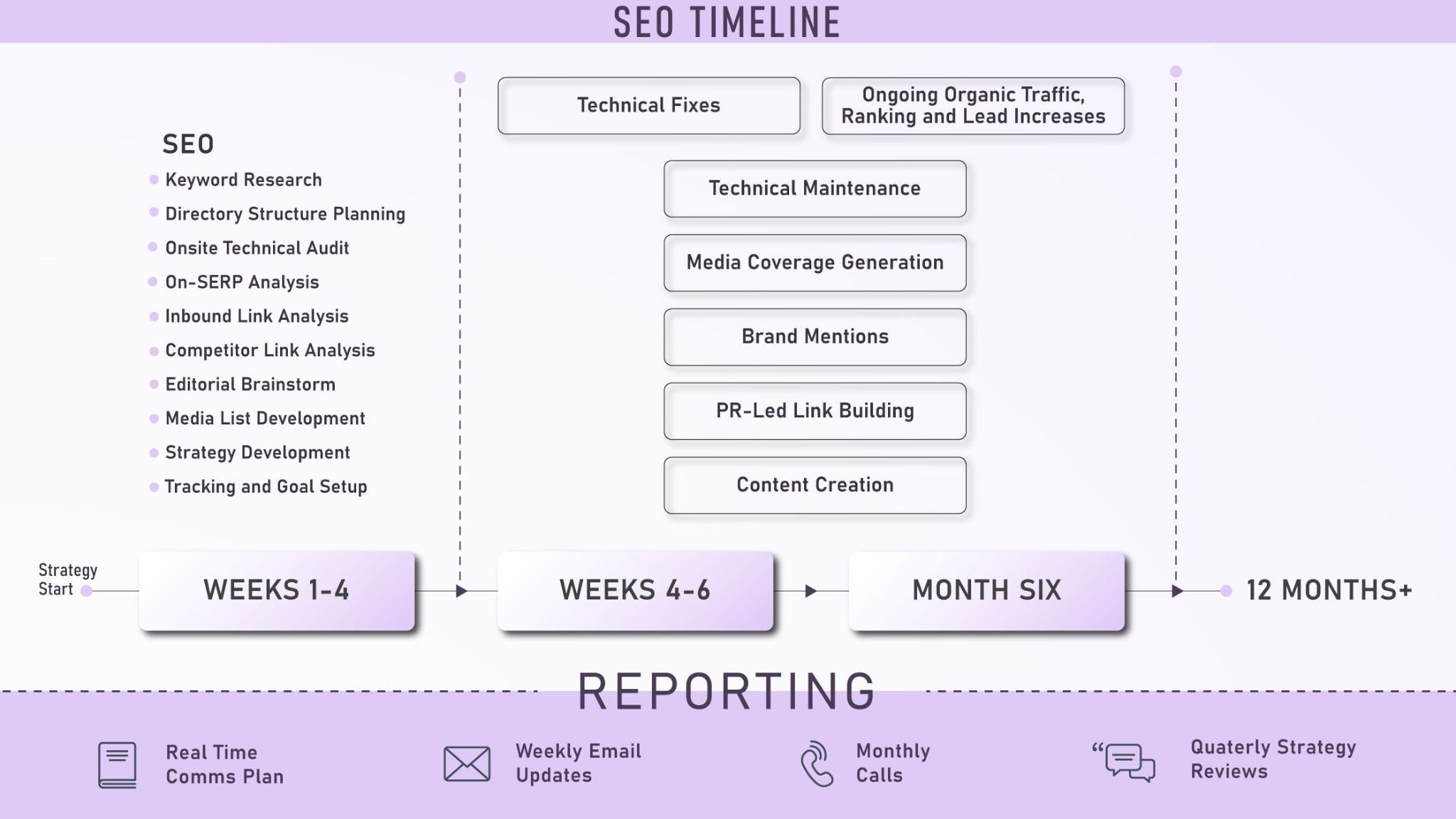
These forecasts set expectations appropriately. By mapping out what “reasonable progress” looks like, both agency and client avoid surprises.
2. Provide Branded Growth Projections for Agencies to Present to Clients
A white label SEO agency can package its forecast into client-ready assets (graphs, visual timelines, midpoint targets) with agency branding. This does two things:
- The agency looks professional and transparent.
- Clients see there is a roadmap, not guesswork.
These visuals become reference points during regular check-ins—“We set this trajectory, here’s where we landed, here’s what’s ahead.”
3. Deliver Early “Quick Wins” to Show Progress While Long-Term Work Unfolds
To keep energy and confidence high, the provider/agency team should aim to deliver early tangible value. Some examples:
- Technical Fixes: correcting crawl errors, removing duplicate content, improving site speed, fixing broken links.
- On-Page Optimizations: title tag tweaks, improving meta descriptions, and internal linking improvements.
- Long-Tail Keyword Wins: targeting less competitive, niche keywords that can start ranking faster.
- UX or Site Structure Improvements: simplifying navigation, enhancing mobile usability.
These quick wins tell clients: “We are working, we are seeing results,” even while the heavy lifting for big-volume ranking gains is still in progress.
By combining forecasts + branded projections + early wins, agencies can better manage the “I want results now” mindset with data, patience, and proof of movement.
Expectation #2: “Can You Guarantee #1 Rankings?”
The Challenge
Clients often demand guarantees like “You’ll get us to the first position for keyword X in six months.” These demands frequently stem from hearing competitors make spectacular promises. But SEO is too unpredictable: algorithm changes, competitor moves, search intent shifts, and external factors all play into ranking.
When agencies accept these guarantees, they risk underdelivery, conflict, and tension. But simply refusing outright may turn clients away, especially if competitor promises look so alluring.
Provider Solutions
1. Position Around Guaranteed Deliverables, Not Guaranteed Rankings
Instead of promising a ranking, promise activities and deliverables you control. For example:
- Number of content pieces published.
- Audits completed.
- Backlink acquisition targets.
- Technical fixes implemented.
These are within your control. You avoid overpromising and still show commitment to execution.
2. Explain Algorithmic Realities and External Uncertainties
Help clients understand that:
- Search engines (especially Google) roll out updates frequently. In fact, Google had core updates in March 2025 and June 2025, each rolled out over weeks.
- Competitors may launch aggressive campaigns at the same time (new content, backlinks, partnerships).
- Search intent can shift (what users look for changes), which can neutralize a seemingly “guaranteed” keyword position.
- Some industries see much higher volatility—healthcare, finance, and legal often have strict rules and algorithm sensitivity.
This doesn’t mean guaranteeing is impossible, but it means clarifying the risk and caveats included in any projection.
3. Use Case Studies Showing Consistent Growth Instead of Unrealistic Promises
Rather than bold claims, provide real examples of steady, predictable growth over 12–24 months. For instance:
- Case studies where ranking improved gradually, month over month.
- Show fluctuations along the way (some gains, some plateaus)—that transparency builds trust.
- Use normalized metrics (traffic growth, conversions) rather than “#1 for everything”.
When clients see that “we cannot promise #1, but here is what we can do—and here’s how it’s worked before”—the conversation shifts from expectations to partnership.
Expectation #3: “SEO Should Be Cheap but Drive Massive Results”
The Challenge
Many clients believe SEO should cost little but deliver massive traffic, leads, and revenue. That’s unrealistic—especially in competitive niches. If budgets are too low, you risk delivering superficial work or underperforming so badly that the client loses faith.
Provider Solutions
1. Offer Industry-Specific Benchmarks (Cost per Lead, ROI by Vertical)
To push back intelligently, providers should bring in data. For example:
- According to FirstPageSage’s 2025 CPL report, organic CPL for legal services averages around $516–$649 (depending on region and scope).
- B2B SaaS organic CPL in that same dataset is around $164, though total blended CPL can go higher.
- SEO generally yields leads that close at - 14.6% conversion rates, whereas outbound methods convert at ~1.7%.
Armed with this data, agencies can say: “In your industry, this is what a realistic lead cost looks like. If your budget is far below that, we need to adjust expectations.”
2. Reframe SEO as a Long-Term Compounding Investment
A key message: SEO isn’t like a fixed ad spend that stops working when your card is cut off. It builds cumulative value over time.
- Many businesses see a 20–30% annual traffic growth when they invest consistently in SEO.
- SEO’s return grows over the years: once content is indexed, links are earned, domain authority strengthens, and each piece of content may continue to drive traffic.
- The break-even point often comes after 6–12 months, but the real payoff often arrives in the second and third year.
Framing this way helps clients see SEO more like a capital investment than a cost.
3. Provide Tiered Service Packages for Realistic Upsells
Structure your white label SEO offering so that agencies can present packages that scale:
- Basic Package: essential technical work, content, and minor link building.
- Mid-Tier Package: more content, more aggressive link building, additional optimization.
- Premium Package: advanced content strategy, PR-level placements, deeper competitor campaigns.
This lets clients pick a level that matches their budget. If they want more results later, you upsell them into the next tier.
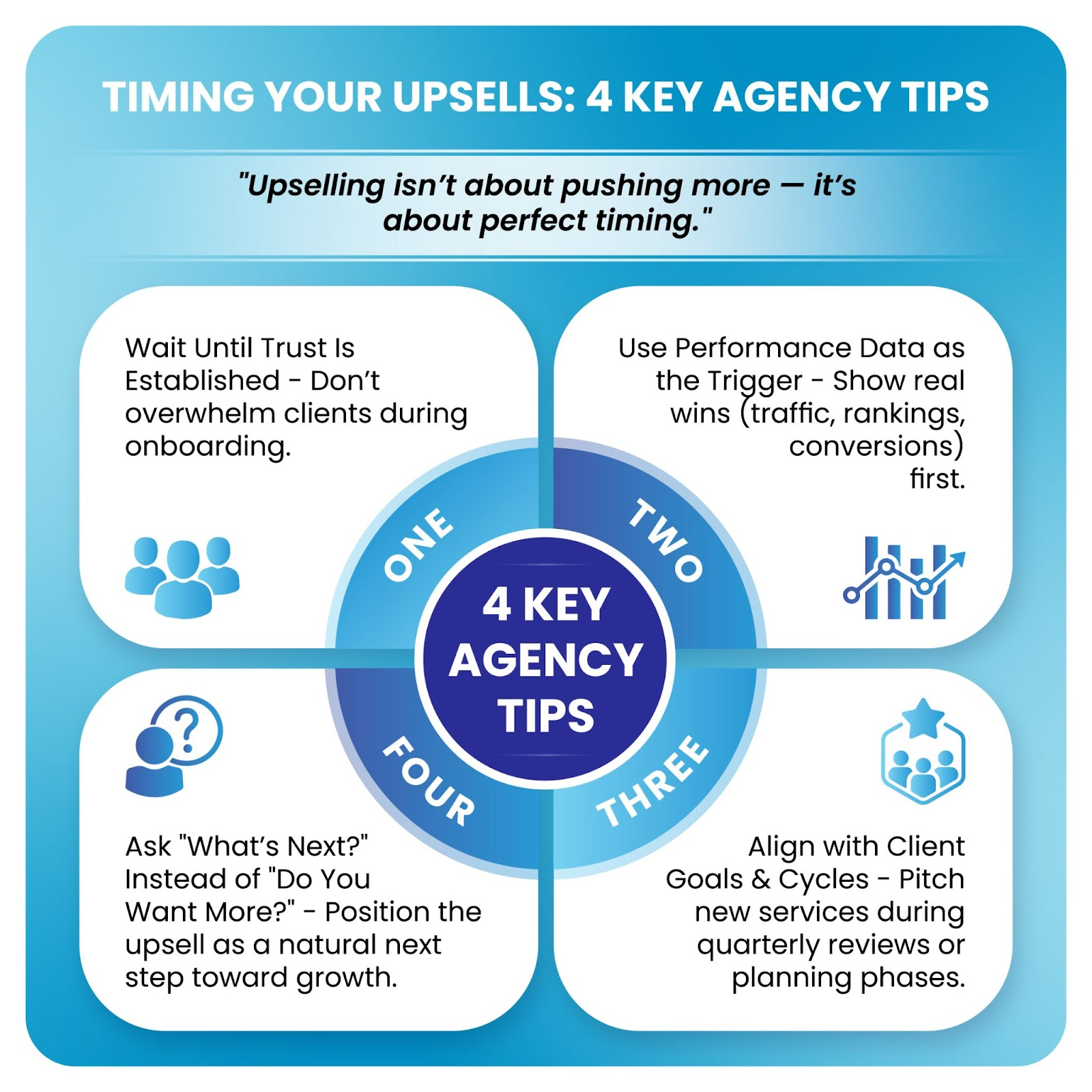
This also helps educate clients: they see what an added budget unlocks in terms of scale and speed.
Further Reading: How Agencies Upsell SEO Packages Without Overpromising
Expectation #4: “We Want to Outrank Big Competitors”
The Challenge
Clients sometimes say, “Why can’t we beat WebMD, HubSpot, Amazon, or other giants in our niche?” That insistence, while ambitious, is rarely practical — especially for newer sites or small businesses with restricted budgets.
Provider Solutions
1. Focus On Niche-Specific Strategies (Local, Long-Tail, Authority Signals)
Giant brands often dominate core, competitive terms. But there are many narrower angles where a smaller client can win:
- Local SEO (if the client serves a region) can yield visibility that major national brands ignore.
- Long-Tail Keywords with lower volume but higher intent may be more accessible.
- Topical Authority Within Subtopics (e.g., deep guides, clusters) can incrementally build domain strength.
By focusing hyper-nicely, the client may get real results rather than fighting an uphill battle.
2. Reframe the Goal: Target Profitable Niches, not Just Volume
Part of the education is helping clients realize that dominating a smaller segment may bring better ROI than chasing volume they can't win. For example:
- If a client is a health clinic, outranking WebMD for a broad “joint pain” keyword may be infeasible. But ranking for “joint pain treatment Chicago” or “knee therapy for seniors in [city]” might deliver paid clients.
- Emphasize that being top in a “narrow, relevant” niche often delivers more qualified leads than being #50 on a broad, high-volume term.
3. Provide Competitive Intelligence Reports to Reset Expectations
White label SEO providers can generate reports comparing your client vs. the big names:
- Domain authority/backlink profile.
- Content depth and structure.
- Keyword overlap and gaps.
- Historical growth trajectories.
When the client sees how deep the gap is, they’re more likely to accept a realistic path. Then the agency can say: “Yes, we can grow you, but here’s what it takes and where we realistically start pushing upward.”
Expectation #5: “SEO is One-Size-Fits-All”
The Challenge
Clients often believe the same SEO blueprint works for all businesses. This assumption leads to disappointment when generic tactics fail to deliver in their niche.
Provider Solutions
1. Use Vertical-Specific Strategies
Different industries need different SEO treatments:
- Healthcare / medical: high need for EE-A-T, compliance, authoritative sources.
- Legal / finance: strong regulatory oversight, reputation, citation strategies.
- SaaS/tech: content funnels, feature pages, integrations, demo pages.
- Local services: citation consistency, local link networks, and Google Business Profile optimization.
A white label SEO provider should be fluent in multiple verticals, so agencies can confidently tell clients: “This is how we’ll tailor it in your niche.”
2. Tailor Campaigns for Compliance, Funnel-Building, or Local Authority
You can show clients examples:
- In healthcare, you might focus on authoritative research, doctor bios, compliant language, and schema for medical conditions.
- For SaaS, you might emphasize content clusters (how-to, tutorials, comparisons) and integration pages.
- For legal, you may emphasize local reviews, local directory presence, citations, and content around case types.
This level of tailoring shows respect for the unique challenges each business faces.
3. Provide Relevant Case Studies (Same Vertical)
Whenever possible, show success stories in that industry. Clients feel more confident when they see similar businesses that have succeeded under comparable conditions. Even if you can’t name a client due to NDA, share anonymized results: “In the legal niche, we increased organic leads 60% in 12 months.”
That reinforces the idea that you understand their world, not just generic SEO.
Expectation #6: “We Don’t Understand What You're Doing with Our Money”
The Challenge
Clients often feel in the dark. If they don’t see precisely what is being done for them, they may assume you’re inactive, overcharging, or delivering low value.
Provider Solutions
1. Provide Branded Dashboards and Reporting
White label SEO providers often include reporting platforms that agencies can rebrand. These dashboards allow clients to see:
- Organic Traffic Trends.
- Keyword Ranking Movements.
- Backlink Growth.
- Content Performance.
- Conversion or Lead Metrics.
This transparency helps the client feel involved and aware.
2. Share Transparent Deliverables (Links, Content, Audits)
Don’t hide the details. Let the client see:
- Which pages had content published?
- Which backlinks were acquired (with quality metrics)?
- Which audits or site changes were made?
- Any SEO tasks scheduled for the upcoming weeks?
This level of detail demystifies SEO. Clients begin to see it as work—not magic.
3. Keep Clients Engaged with Simplified Progress Reports
The trick is to show complex work simply:
- Use visuals (charts, graphs).
- Use short narrative summaries (“This week we fixed 15 crawl errors, published 2 blog posts, earned 3 backlink placements”).
- Tie progress to forecasts or milestones (“We expected +2 ranking positions; we got +1. Next phase targets +3”).
This keeps clients informed without overwhelming them.
Expectation #7: “Can’t SEO Replace All Other Marketing?”
The Challenge
Some clients think that once SEO is running, they can shut down or reduce other marketing channels (PPC, social, and content promotion). They may expect SEO to function like a growth engine that replaces everything else.
Provider Solutions
1. Educate Clients on Seo’s Role in the Marketing Mix
Teach them that SEO is foundational but often slower. It takes time to build, while paid efforts often get faster, immediate results. SEO often works best when combined with:
- Paid Advertising.
- Content Promotion.
- Social media.
- Email Marketing.
SEO should complement—not replace—the existing marketing stack.
2. Show How SEO Integrates with Other Channels
When possible, present integrated strategies:
- Use PPC to test and validate demand before committing to SEO.
- Promote SEO content on social to generate early traffic and shares.
- Use email to nurture leads captured via organic landing pages.
- Retarget organic visitors through paid ads.
When clients see SEO as part of a whole system, they’re less likely to expect it to do everything alone.
3. Offer Bundled Solutions (SEO + PPC, SEO + Content)
If your white label provider offers complementary services (or if the agency itself does), present combined packages. A “SEO + PPC” or “SEO + content promotion” package can:
- Offer immediate traffic (via paid) while SEO ramps.
- Show the synergy between channels.
- Help clients feel they are investing in a balanced marketing strategy.
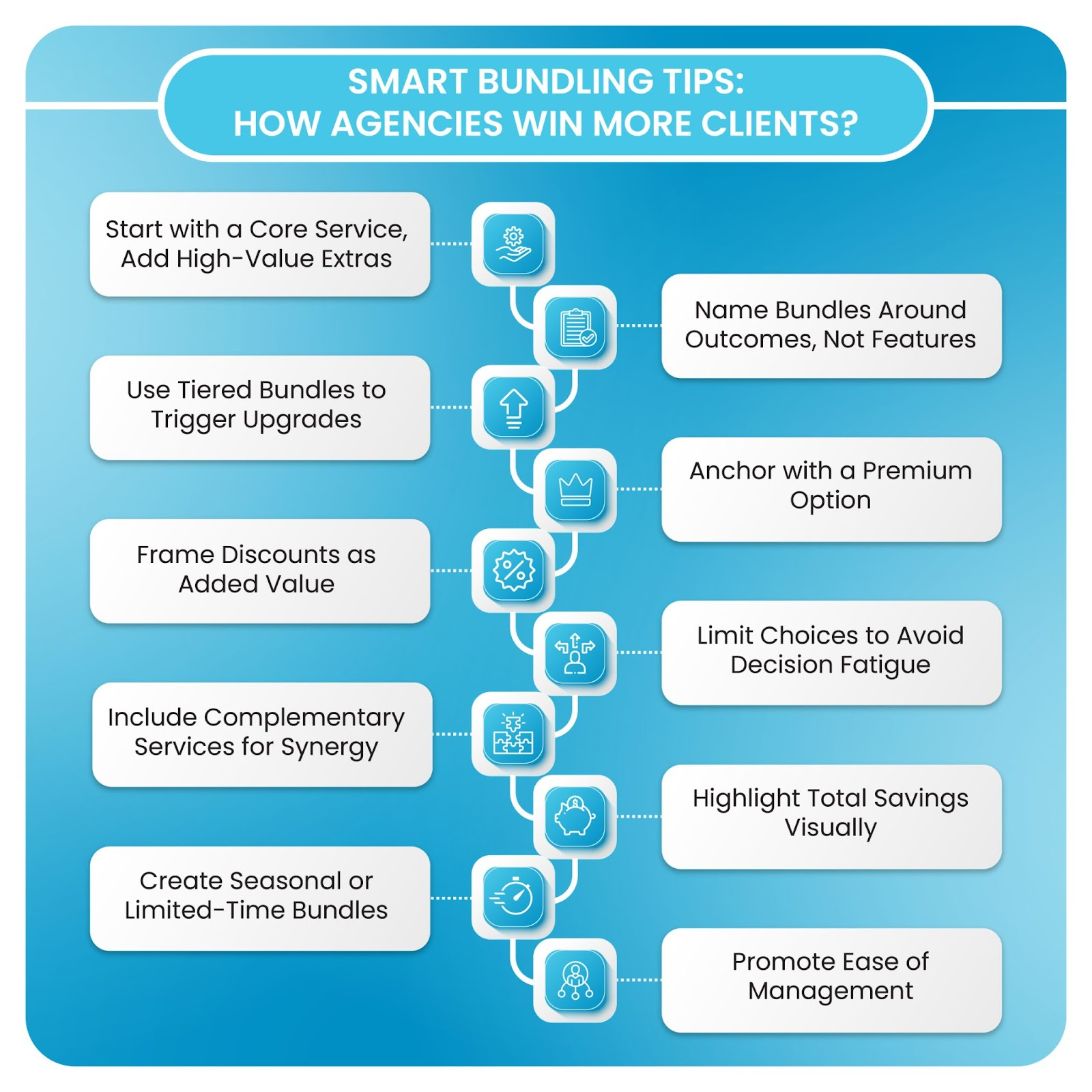
Expectation #8: “Why Haven’t We Seen ROI Yet?”
The Challenge
Clients often become impatient. After 2–3 months, they may ask, “When do we see real returns?” If the agency hasn’t primed them for the fact that large ROI often lags, this question can turn into friction.
Provider Solutions
1. Highlight Micro-Metrics as Leading Indicators
Before revenue is obvious, you can point to:
- Ranking improvements (even small keyword position gains).
- Impression growth (more eyes, even if CTR has not yet peaked).
- Click-through rate (CTR) gains.
- Backlinks earned.
- Content engagement metrics (time on page, bounce, scroll depth).
These show momentum in the pipeline, not just final ROI.
2. Use Quarterly Milestone Resets
Rather than waiting a full year to show ROI, you can plan checkpoints:
- Month 3: ranking & indexation progress.
- Month 6: traffic & lead increase.
- Month 9: pipeline conversion, micro ROI.
- Month 12: more mature ROI.
At each checkpoint, compare actual vs forecasted, adjust strategy, reset expectations.
3. Reframe SEO as a Compounding Asset
It helps to remind clients:
- Early gains feed into later growth (more content, more links, more visibility).
- ROI may look small at first, but cumulative over the years, it becomes significant.
- Many months’ work continues to produce traffic and leads long after the initial effort.
In data from SEO ROI studies, the second and third years often deliver the most dramatic returns.

DashClicks has built its platform specifically to help agencies overcome these common challenges. Through its white label SEO services, agencies get access to forecasting tools, transparent client dashboards, and industry-specific strategies. This makes it easier to set realistic goals, show measurable progress, and maintain trust with clients.
By offering white-labeled reporting and consistent deliverables, DashClicks empowers agencies to spend less time justifying their work and more time building long-term relationships.
Turning Unrealistic Expectations into Long-Term Retention
Unrealistic client expectations are a constant in the SEO industry. The key isn’t trying to eliminate them but learning how to manage them effectively.
With the right white label SEO partner, agencies can:
- Reframe client expectations through data and transparency.
- Deliver early wins while reinforcing long-term strategies.
- Avoid burnout by outsourcing technical work to experts.
The result? Stronger client relationships, better retention, and more predictable growth for agencies.
Unrealistic expectations don’t have to be agency-killers. With the right partner, they can become opportunities to educate, build trust, and deliver lasting value.
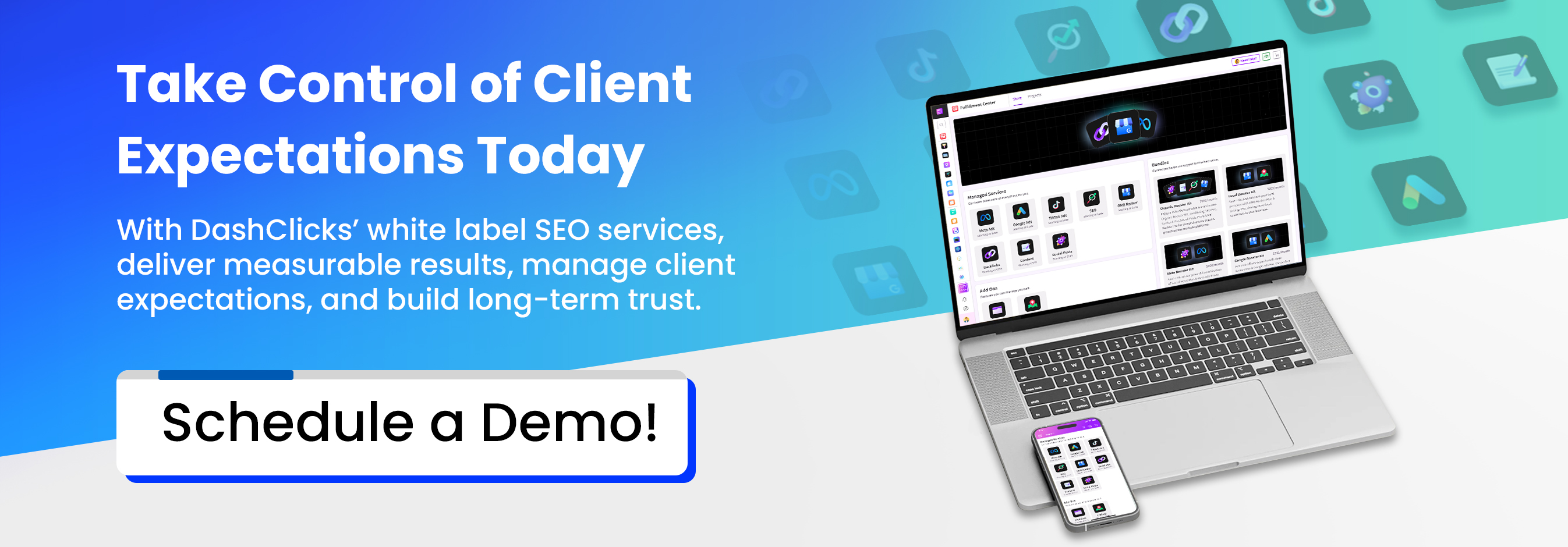

White Label Facebook Ads vs. Freelancers: Which Scales Better for Agencies
Scaling a digital marketing agency sounds exciting on paper, but the reality is more complicated. Running a few Facebook Ad accounts is manageable, but the challenge grows when you need to juggle dozens of clients.
Campaigns demand creative testing, compliance monitoring, real-time optimization, and accurate reporting. That’s when agencies start asking: Should we rely on freelancers or partner with a white label provider? This isn’t just about cost. It’s about scalability, client trust, and long-term growth.
In this blog, we’ll explore the key differences between white label Facebook Ads and freelancers, focusing on what truly matters for agencies: client perception, delivery consistency, retention, and scalability over the next 12–24 months.
The Real Challenge of Scaling Paid Media
Managing five Facebook Ad accounts is relatively straightforward. Each account can receive personalized attention, campaigns can be closely monitored, and minor optimizations can be handled manually.
However, as agencies scale to managing 20, 50, or even 100 accounts, complexity grows exponentially. Campaigns span multiple industries, each with different target audiences, creative needs, and compliance requirements. Without proper systems, agencies can quickly find themselves overwhelmed. Deadlines slip, reports become inconsistent, and campaigns are not optimized to their full potential.
Freelancers may seem like an affordable solution to this problem, but relying solely on individual contractors has limitations. A single freelancer can only handle so much workload, and their processes may not align with your agency’s standards. In contrast, white label Facebook advertising providers are structured for scale.
They have dedicated teams, established processes, and technology frameworks that allow agencies to grow client accounts without sacrificing quality or speed. When evaluating scaling strategies, agencies need to focus on how each model affects client experience, delivery consistency, and overall growth potential.
As noted by Roel Manarang of Workroom, “For large-scale or multiple campaigns, white label services offer the infrastructure and expertise needed.”
The Core Question Agencies Must Ask
When agencies consider growth, the conversation often defaults to cost or expertise. But the critical question is sustainability: Which model allows an agency to grow without collapsing under its own weight? Freelancers may offer lower rates upfront, but the hidden costs—delays, inconsistent quality, and client dissatisfaction—can quickly outweigh savings.
Agencies must think about scalability over the next 12–24 months. Decisions made today about staffing, processes, and client management directly influence future growth. Investing in short-term fixes may seem cost-effective, but scaling requires predictable systems and frameworks that can consistently deliver results.
For Clients: Sustainable growth means predictable, reliable performance rather than intermittent successes. Agencies that can consistently deliver results build trust and foster long-term relationships, which ultimately improve client retention and revenue stability.
1. Client Perception & Brand Control at Scale
Clients judge agencies not only by the outcomes of campaigns but also by how results are communicated. Consistency in reporting, tone, and presentation plays a crucial role in shaping client perception.
Freelancers: Each freelancer has a unique working style. Some may provide detailed reports, while others submit minimal data. Communication frequency, response times, and the quality of insights can vary significantly. Over time, these inconsistencies can make an agency appear disorganized or unreliable.
White Label Providers: Offer standardized reporting, branded dashboards, and consistent client communication. All updates, insights, and recommendations are presented professionally and cohesively, reflecting the agency’s brand rather than an individual contractor’s style.
For Clients: A consistent and professional experience reinforces confidence in the agency. They perceive your business as reliable, organized, and capable of handling growth without sacrificing quality.
2. Cross-Client Data & Benchmarking Power
As agencies handle more campaigns, the value of cross-client data becomes apparent. Patterns in performance, audience behavior, and creative effectiveness can inform future campaigns, but freelancers working independently rarely aggregate this knowledge.
Freelancers: Typically operate in isolation. While they may be effective on individual accounts, they cannot leverage insights across clients to improve targeting or optimize performance benchmarks.
White Label Providers: Have access to aggregated data across industries and client accounts. They can establish benchmarks for CPL, ROAS, and CTR, giving agencies realistic performance expectations and enabling informed strategy adjustments.
For Clients: Agencies using Facebook ads services can apply proven benchmarks to campaigns, increasing the likelihood of achieving measurable results and reducing guesswork.
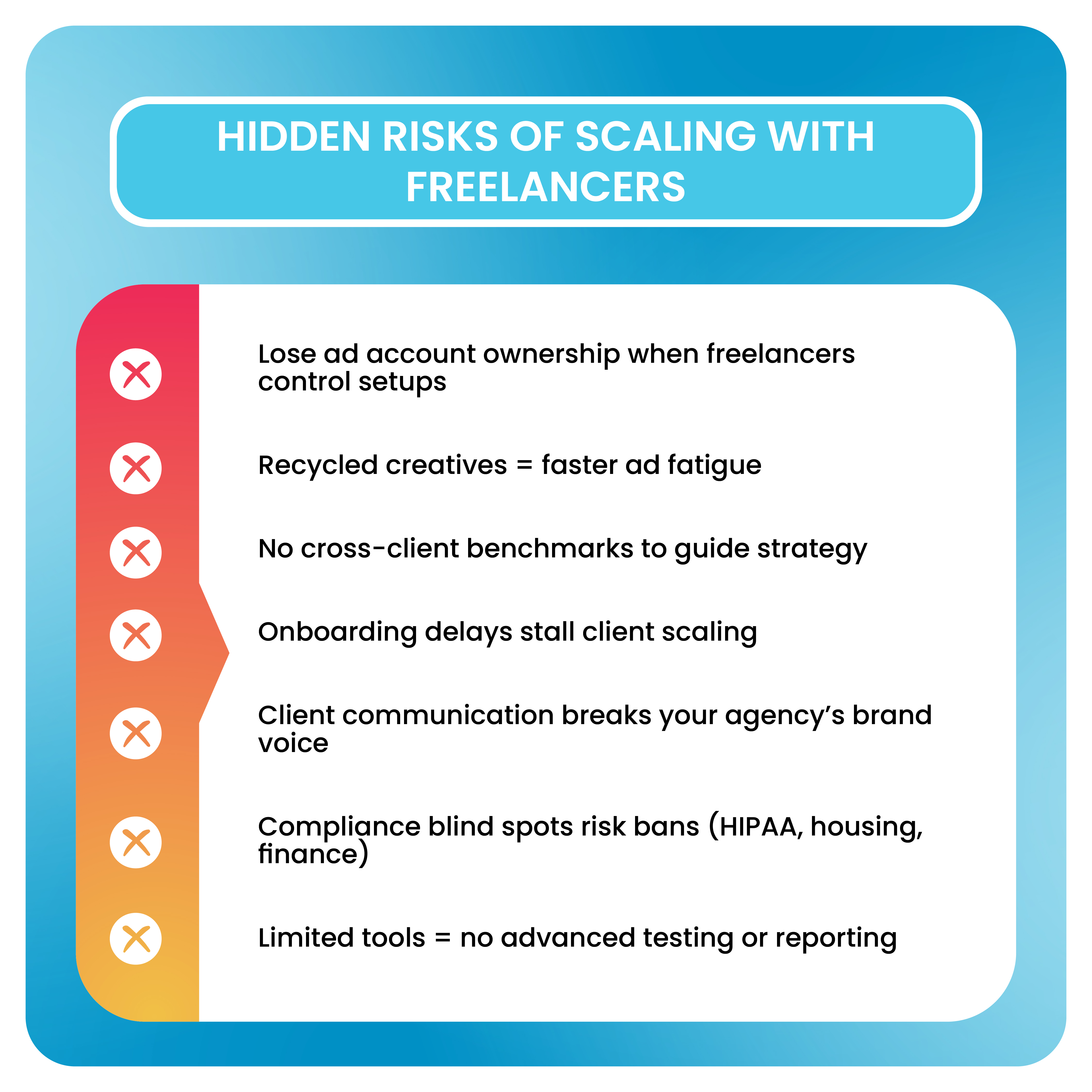
3. Onboarding Speed & First 30 Days Impact
The initial phase of an agency-client relationship is critical. Delays in launching campaigns or producing early results can undermine confidence and increase churn risk.
Freelancers: Often require time to learn your agency’s systems, client goals, and previous performance data. This learning curve can delay campaign launches and reduce early effectiveness.
White Label Providers: Utilize proven standard operating procedures (SOPs) and pre-designed templates, enabling agencies to launch campaigns quickly. Campaigns can go live faster, and early optimizations are based on tested methods rather than trial and error.
For Clients: Faster results in the first 30 days build trust, reinforce confidence in the agency’s capabilities, and reduce the likelihood of early termination.
4. Reliability Under High Volume & Crisis Scenarios
Seasonal spikes, unexpected client requests, or crises test an agency’s ability to maintain performance.
Freelancers: Represent a single point of failure. If a freelancer is unavailable due to illness, vacation, or workload, campaign delivery suffers. Agencies may scramble to cover gaps, risking errors or missed opportunities.
White Label Providers: Offer team redundancy, ensuring that multiple professionals can manage accounts. Even during high-stakes periods, campaigns continue seamlessly.
For Clients: This reliability guarantees uninterrupted campaigns, protecting revenue during critical periods like product launches or seasonal sales.
5. Innovation & Access to Advanced Features
Innovation is essential in paid media. Access to new tools and beta features can give campaigns a competitive edge.
Freelancers: Often limited to their knowledge, skillset, or personal tools. They may not be aware of the latest platform updates, beta features, or advanced optimization strategies.
White Label Providers: Many are Meta partners, granting them access to beta programs, advanced APIs, and specialized testing frameworks. This enables agencies to implement cutting-edge campaigns faster than competitors.
For Clients: They benefit from advanced strategies that deliver better performance and more growth opportunities.
6. Scaling Creative Testing Without Burnout
Creative testing is central to improving ad performance. However, constant experimentation requires resources and bandwidth.
Freelancers: Limited in capacity, freelancers may only be able to run a few creative variations at a time, restricting optimization opportunities.
White Label Providers: Dedicated teams continuously test ad copy, visuals, and video formats. This structured approach ensures a steady pipeline of fresh creatives.
For Clients: They gain campaigns with consistently high-performing creatives that maximize engagement and conversion.
7. Regulatory & Compliance Safety Nets
Compliance mistakes can be costly. Platforms like Meta have strict advertising policies, and violations can result in account suspension.
Freelancers: Lack formal compliance frameworks, increasing the risk of accidental violations, especially in industries like healthcare, finance, or local services.
White Label Providers: Have built-in compliance checks, ensuring that all campaigns adhere to platform rules and legal regulations.
For Clients: Reduced risk of ad rejection or account suspension provides peace of mind and protects revenue streams.
8. Standardized Client Education & Reporting
Clear reporting and client education are critical for maintaining trust.
Freelancers: Often produce ad-hoc reports without consistent metrics, context, or Facebook insights. This can confuse clients and reduce confidence in campaign effectiveness.
White Label Providers: Deliver standardized dashboards and consistent explanations, helping clients understand results and ROI.
For Clients: Improved transparency fosters trust, making them more likely to stay long-term.
9. The Hidden Cost of Churn vs. Retention Stability
Retaining clients is significantly more cost-effective than acquiring new ones. According to HubSpot, acquiring a new client can cost 5–7 times more than retaining an existing one.
Freelancers: Inconsistent work and delayed results increase the risk of client churn.
White Label Providers: Reliable, repeatable processes reduce churn, stabilize retention rates, and improve lifetime client value.
For Clients: Long-term partnerships result in consistent growth and predictable campaign management.
10. Decision Framework for Agencies
Choosing between freelancers and white label providers depends on an agency’s scale, goals, and risk tolerance.
Freelancers Work Well For: Early-stage agencies with few clients, one-off projects, or temporary workload spikes.
White Label Providers Work Well For: Agencies aiming to scale beyond a handful of accounts, operate in regulated industries, or require consistency for long-term growth.
For Clients: Agencies that scale strategically and leverage white label support deliver predictable, professional, and high-performing campaigns, ensuring sustainable success.
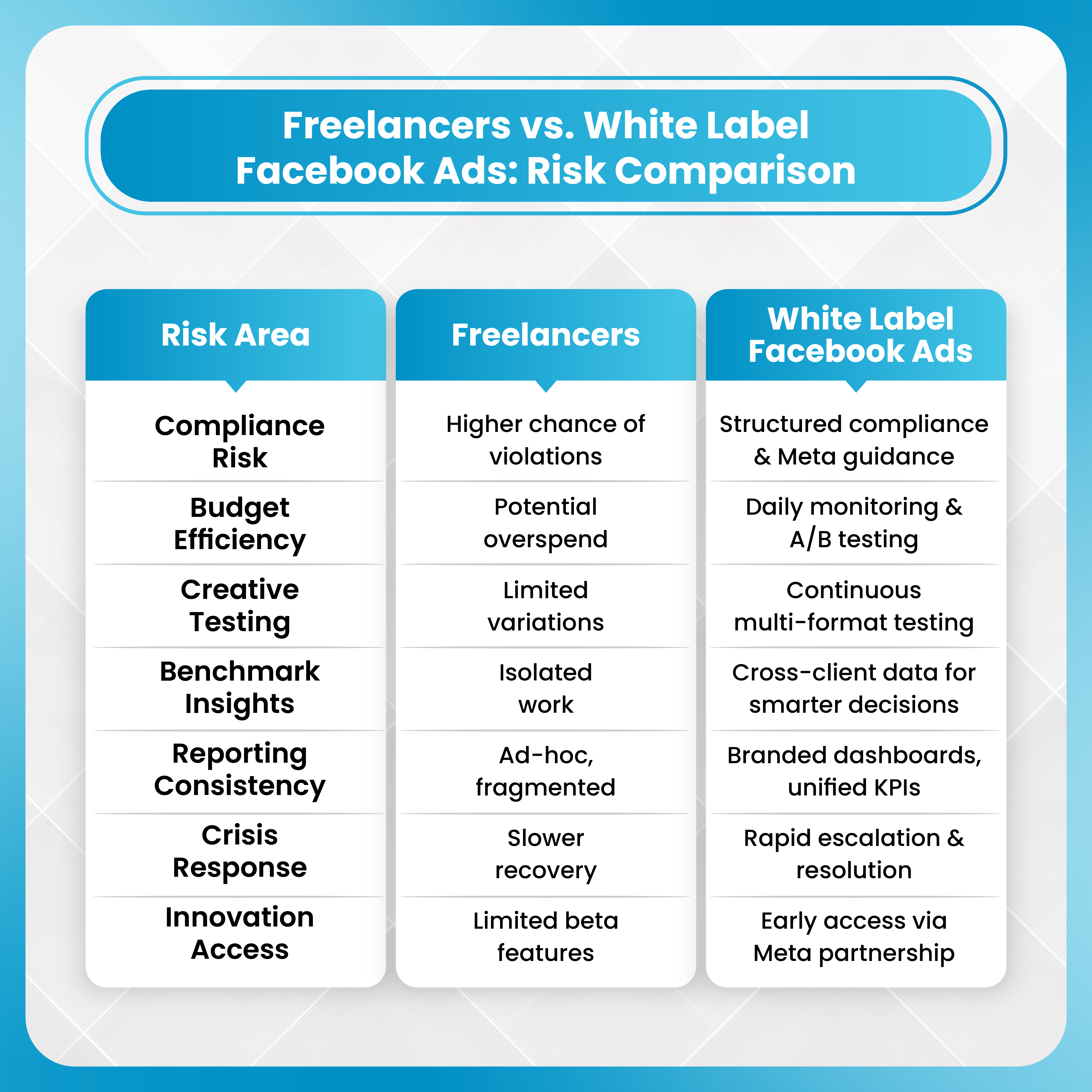
How DashClicks Helps Agencies Scale?
DashClicks is built to help marketing agencies grow without the growing pains that often come with scaling. Instead of relying on a handful of freelancers or stretched internal teams, agencies can leverage DashClicks’ white label Facebook Ads management to maintain quality and consistency at scale.
By integrating advanced tools, standardized processes, and dedicated teams, they ensure that every client campaign is managed efficiently and professionally.
Agencies using DashClicks gain access to a full team of experts—including media buyers, strategists, and creative professionals—without the overhead of hiring in-house staff. This setup allows agencies to focus on client strategy, relationship building, and business growth while Dashclicks handles the technical execution, optimization, and reporting.
Some key ways DashClicks helps agencies scale include:
- Rapid Client Onboarding: The platform uses proven standard operating procedures (SOPs) that accelerate the client onboarding process. Agencies can bring new clients into campaigns quickly, minimizing delays and delivering early results. Faster onboarding increases client satisfaction and reduces the risk of early churn, which is critical in the first 30 days of engagement.
- Branded Reporting Dashboards: They provide customizable, branded dashboards that give clients a clear view of campaign performance. Agencies maintain full control over how results are presented, ensuring a professional, consistent experience. Clients can easily track key metrics such as CTR, ROAS, CPL, and conversions without confusion or reliance on ad-hoc reports.
- Scalable Campaign Management: The platform is designed for high-volume campaign management. Agencies can run multiple accounts simultaneously, leverage cross-client insights, and apply advanced optimization strategies without overloading internal resources. The structured workflow allows for scaling creative testing, audience targeting, and performance optimization efficiently.
- Improved Client Retention: By delivering consistent results, timely communication, and professional reporting, they help agencies maintain high client satisfaction and retention rates. Predictable outcomes and reliable campaign management reduce client churn, translating to higher lifetime value and long-term growth.
- Access to Advanced Tools and Features: They provide access to the latest Meta tools, APIs, and beta features, allowing agencies to stay ahead of the curve. From creative testing frameworks to audience optimization tools, agencies can offer clients cutting-edge strategies that freelancers may not have access to.
- Time and Resource Efficiency: By outsourcing the execution of Facebook Ads campaigns to DashClicks, agencies free up internal resources for strategic planning, business development, and client relationship management. This ensures that teams are not bogged down by operational tasks and can focus on high-value activities.
This combination of expert execution, standardized systems, and advanced tools makes DashClicks a reliable partner for agencies looking to scale beyond patchwork solutions. Agencies gain the infrastructure to manage growth strategically, maintain high-quality campaigns, and provide clients with the consistency and professionalism required for long-term success.
Conclusion: The Scalability Verdict
Freelancers are useful for tactical projects or short-term support. But when it comes to scaling, white label Facebook Ads provide the infrastructure agencies need to grow without compromising quality. They offer standardized systems, team redundancy, compliance frameworks, and advanced tools—all of which directly improve client experience and retention. Agencies should evaluate where they want to be in the next 12–24 months and choose accordingly.
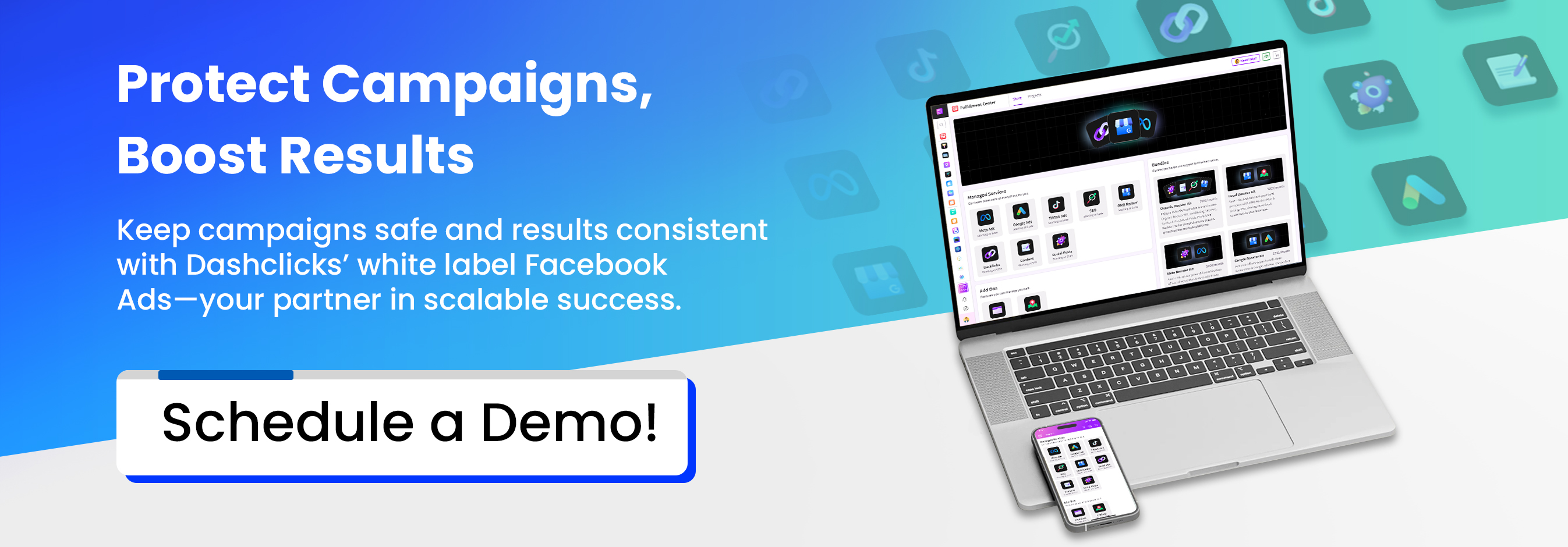

No results found.
Please try different keywords.
Get Started with
DashClicks Today
Get found online, convert leads faster, generate more revenue, and improve your reputation with our all-in-one platform.
.svg)
Unlimited Sub-Accounts
.svg)
Unlimited Users
.svg)
All Apps
.svg)
All Features
.svg)
White-Labeled
.svg)
Active Community
.svg)
Mobile App
.svg)
Live Support
.svg)
100+ Tutorials
.svg)
Unlimited Sub-Accounts
.svg)
Unlimited Users
.svg)
All Apps
.svg)
All Features
.svg)
White-Labeled
.svg)
Active Community
.svg)
Mobile App
.svg)
Live Support
.svg)
100+ Tutorials
.svg)
Unlimited Sub-Accounts
.svg)
Unlimited Users
.svg)
All Apps
.svg)
All Features
.svg)
White-Labeled
.svg)
Active Community
.svg)
Mobile App
.svg)
Live Support
.svg)
100+ Tutorials



.svg)
.svg)
.svg)
.svg)
.svg)


